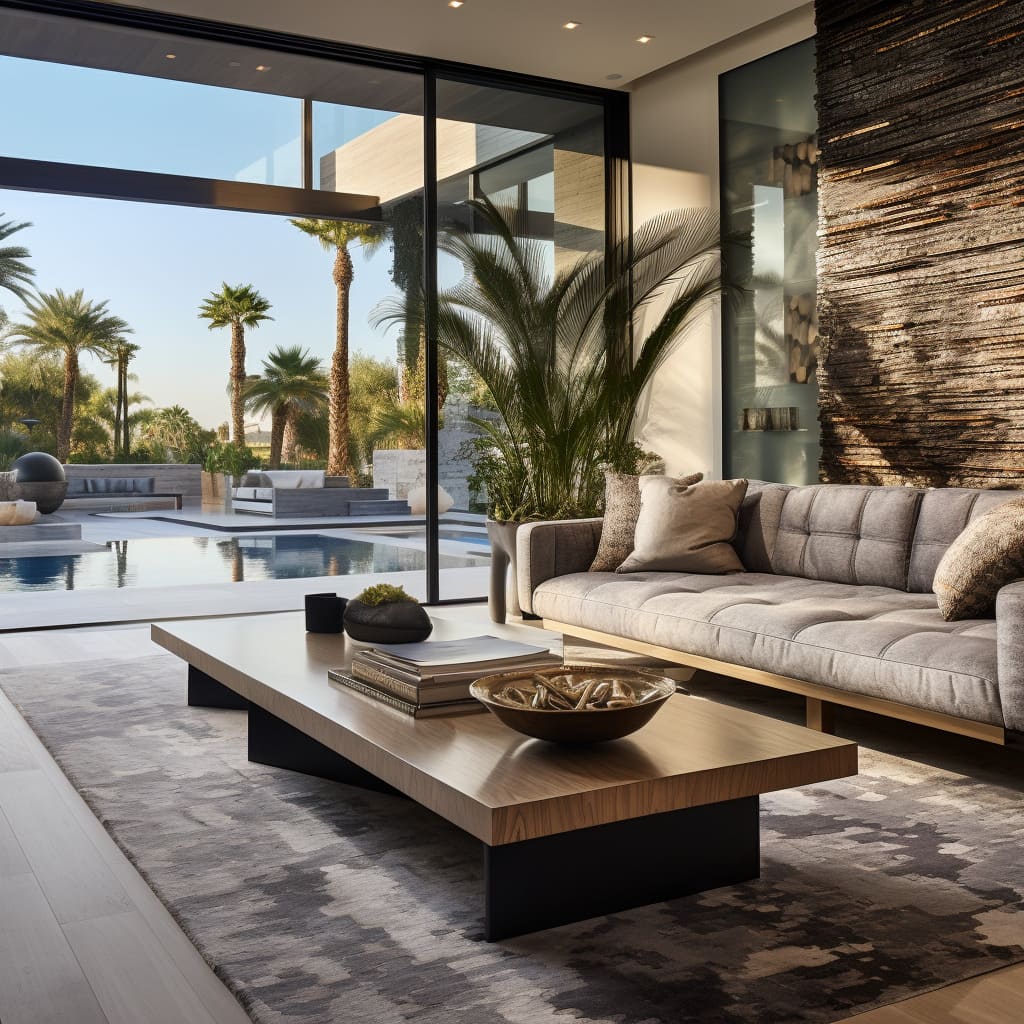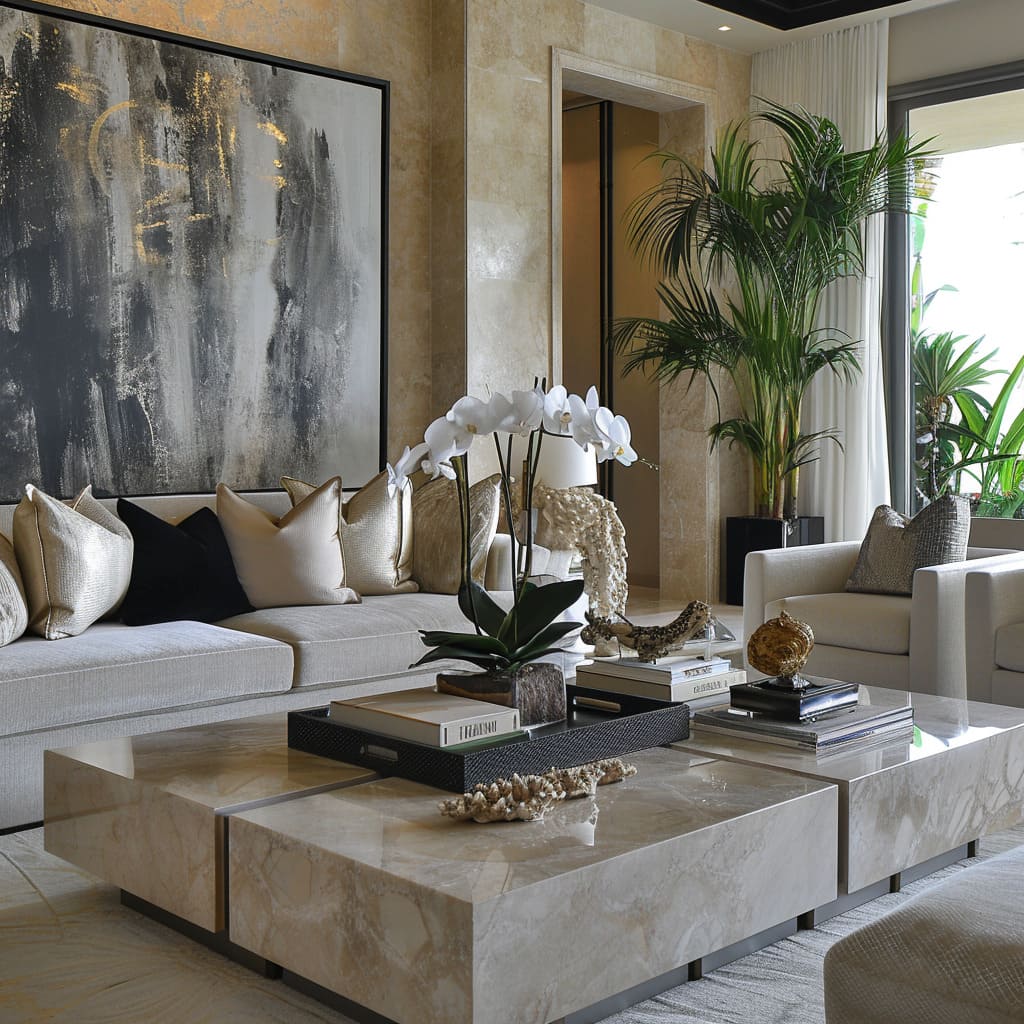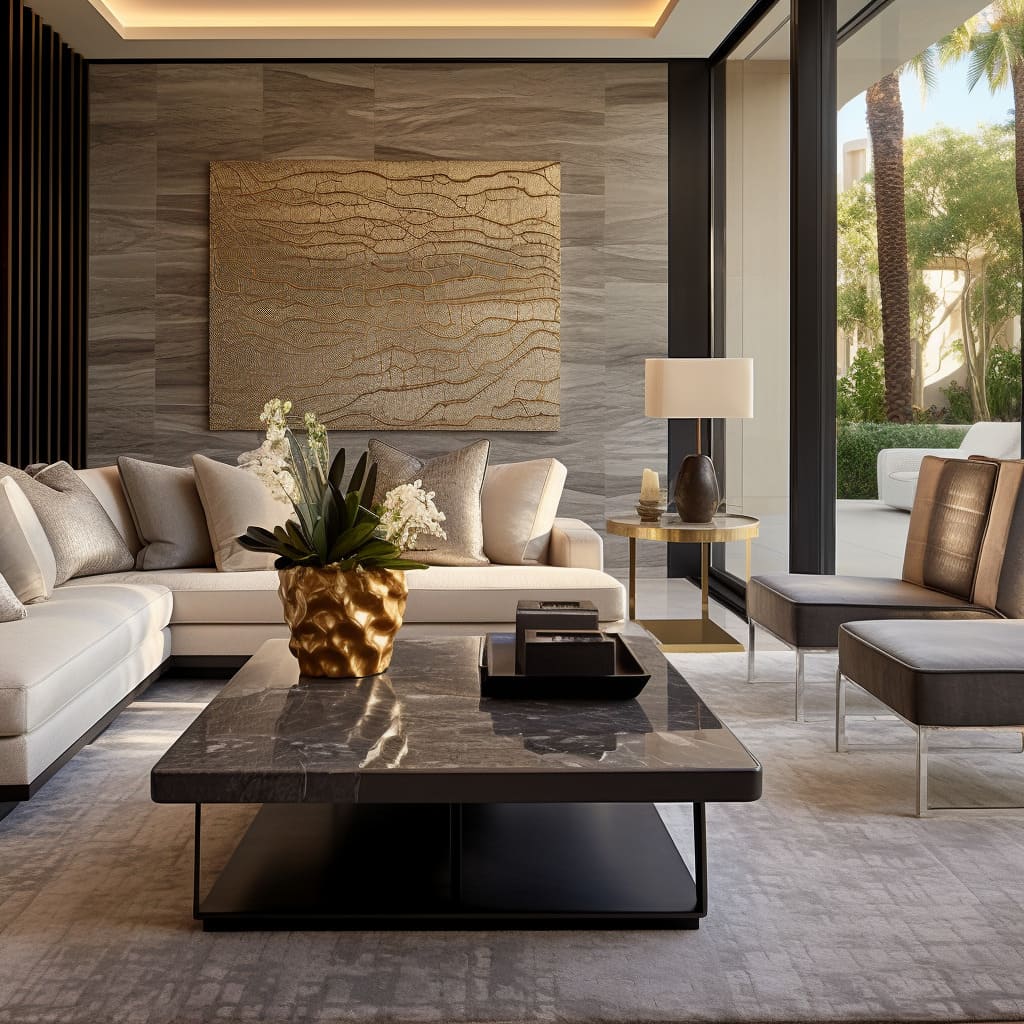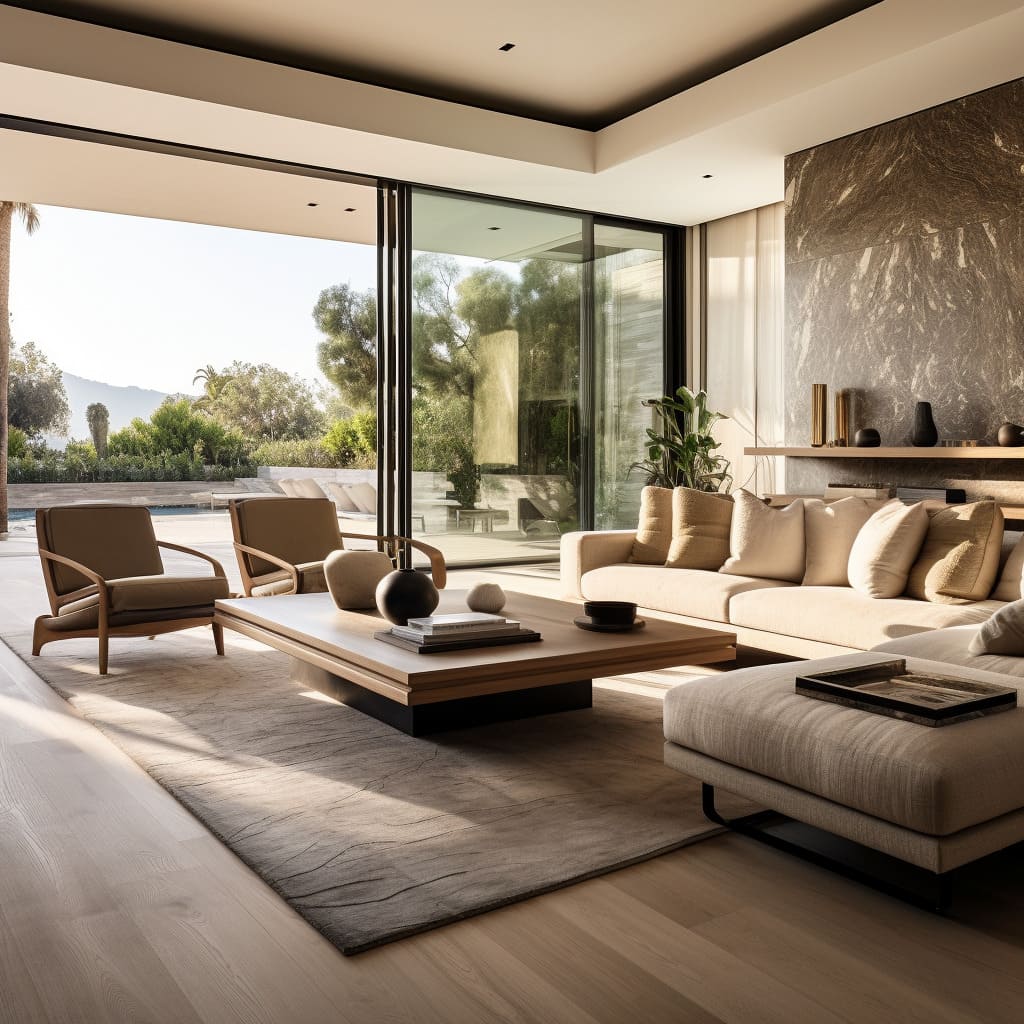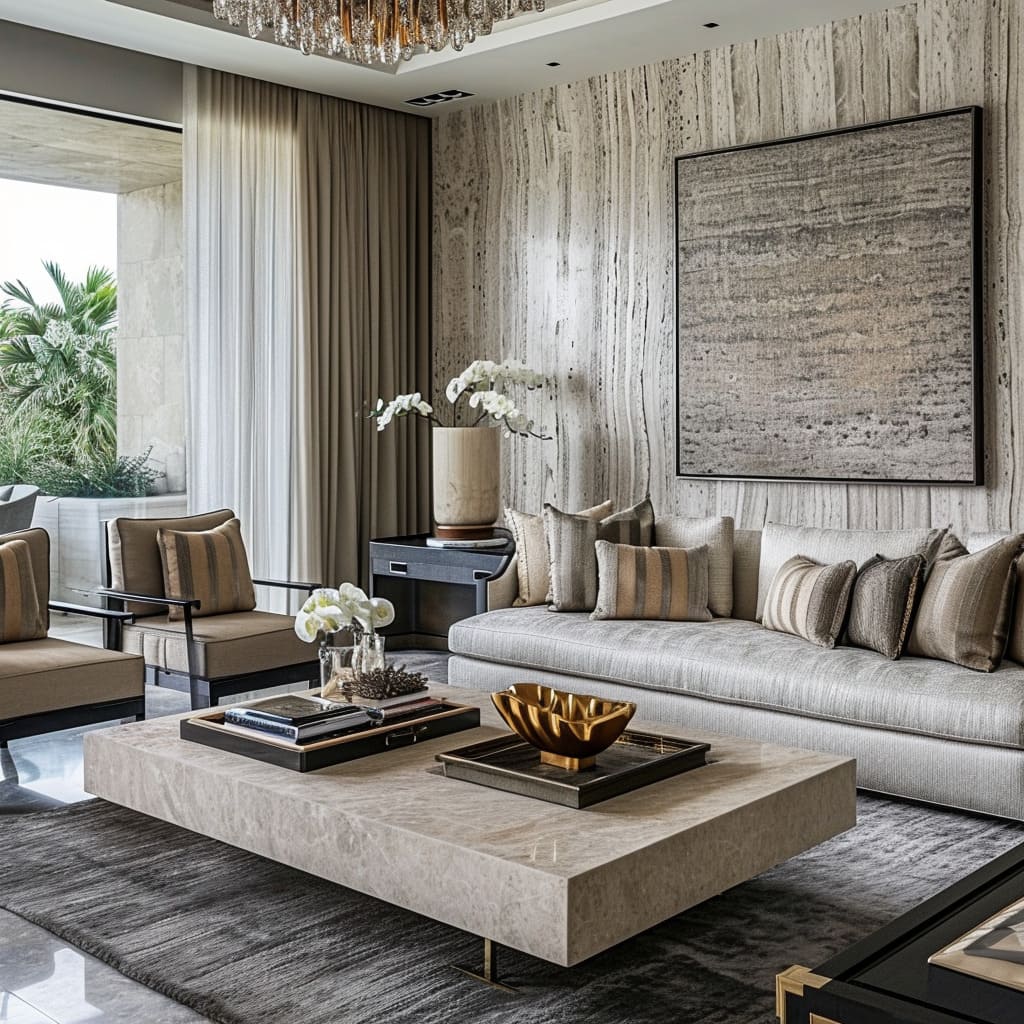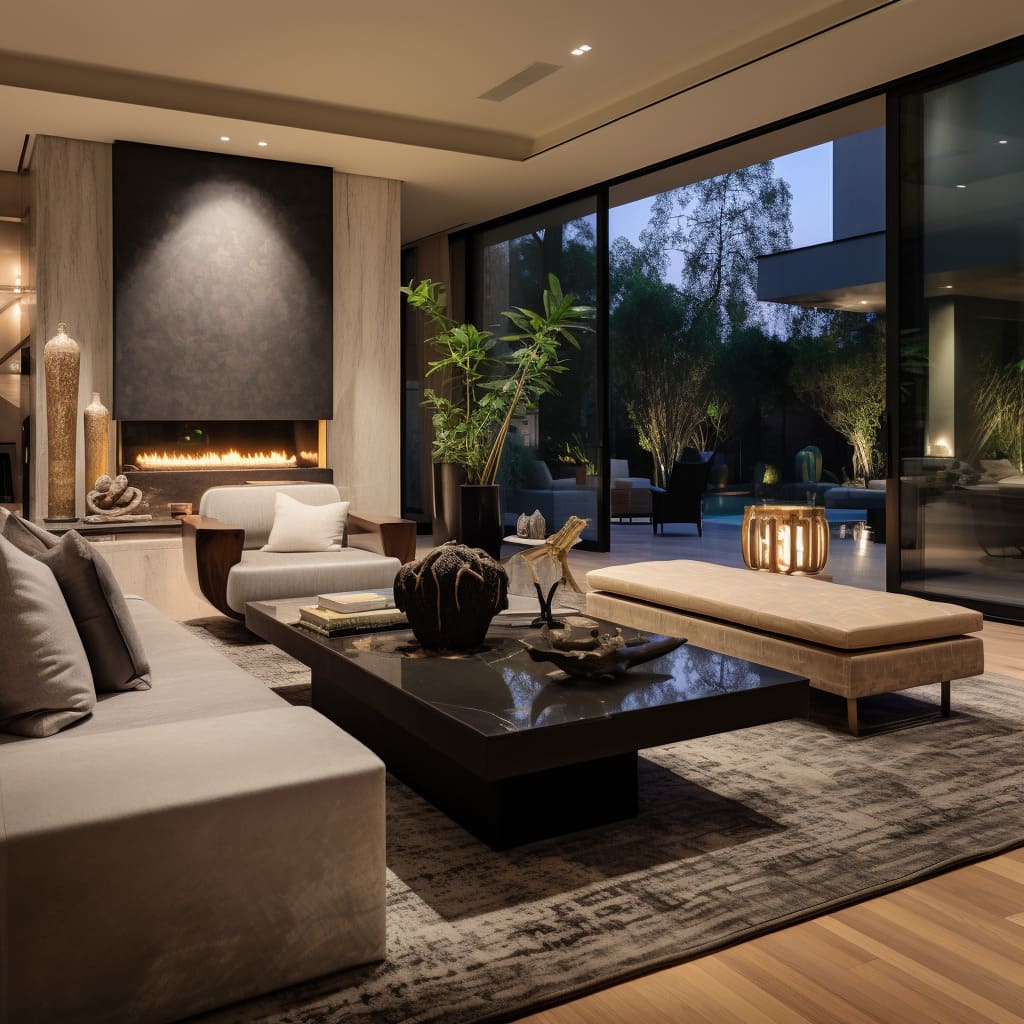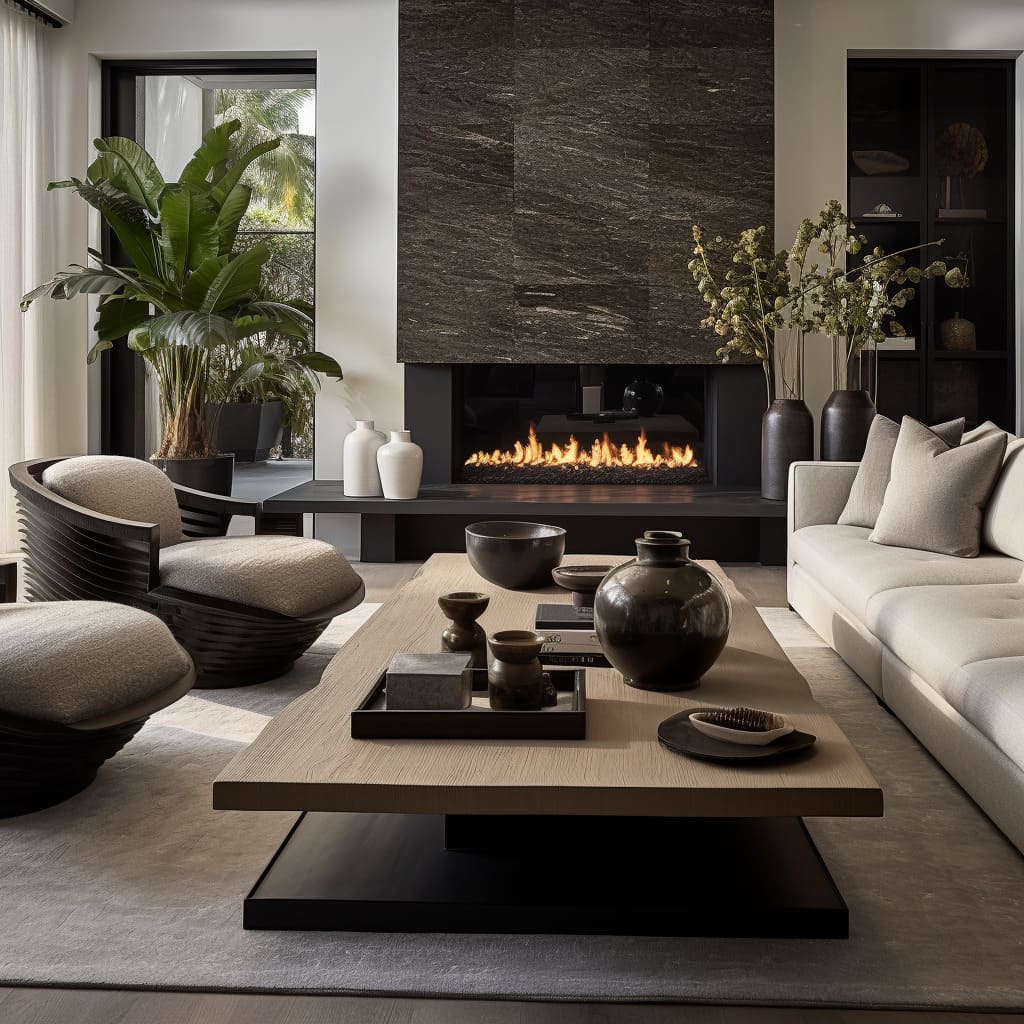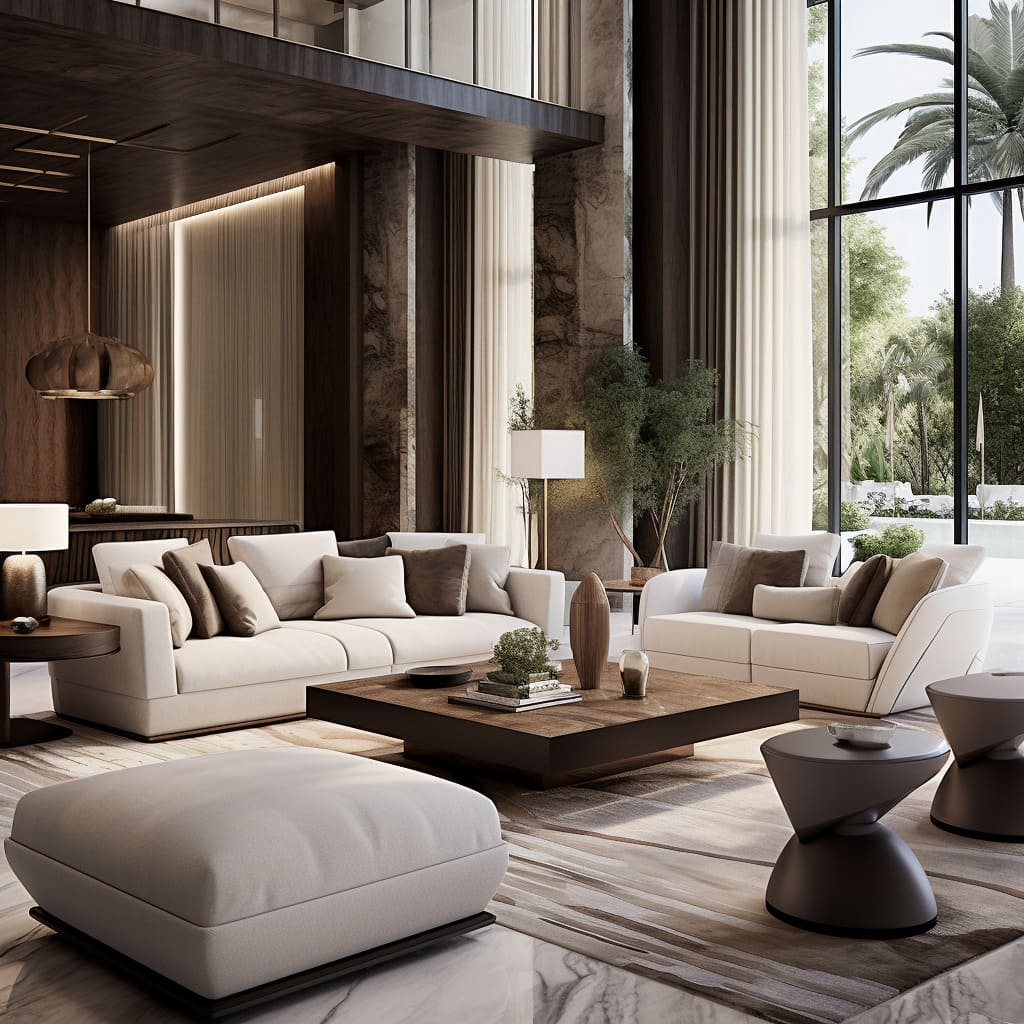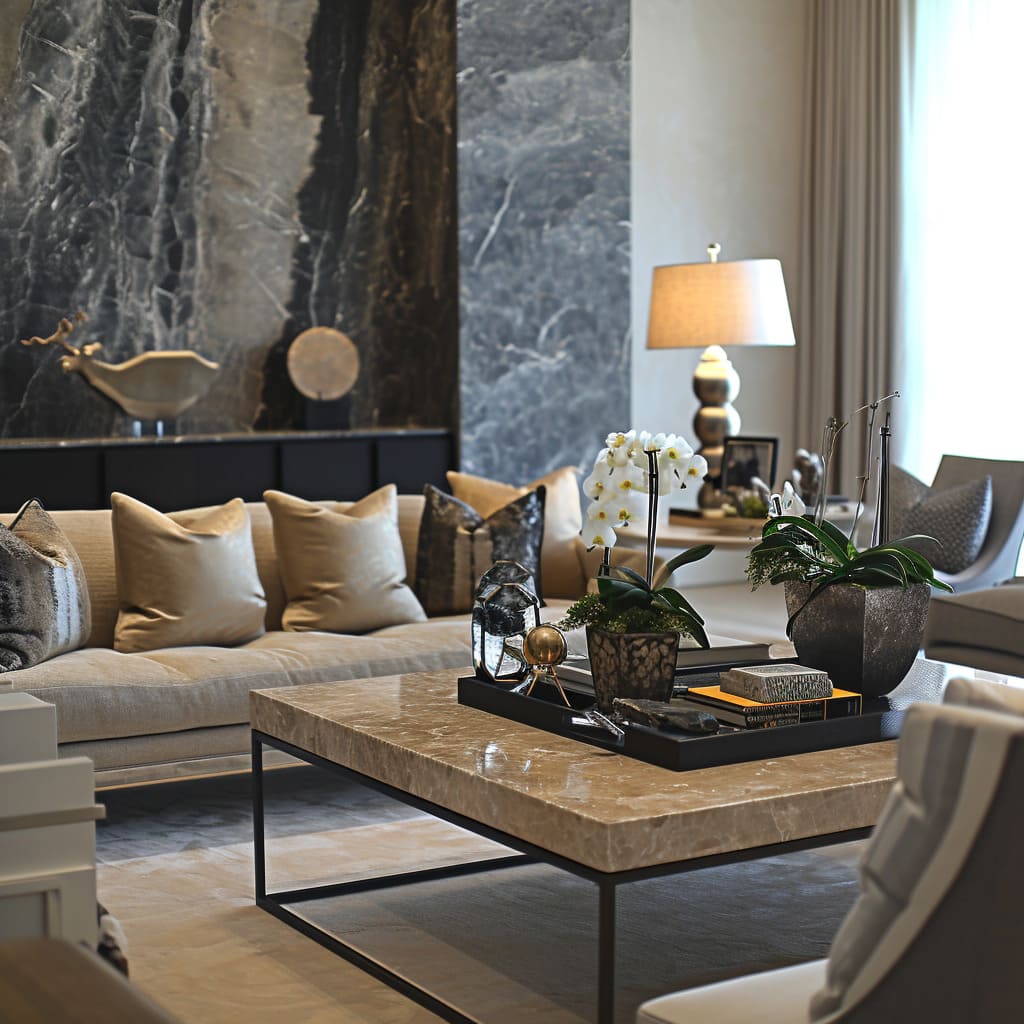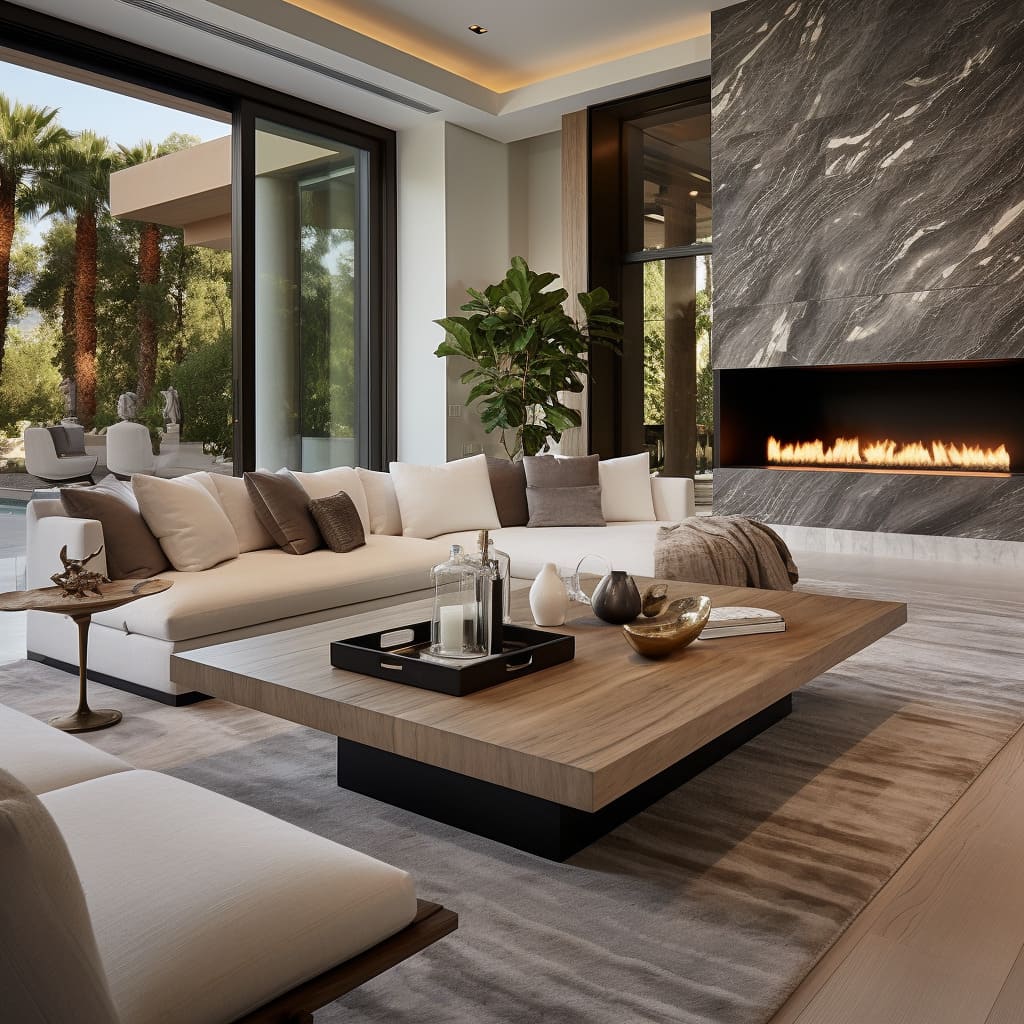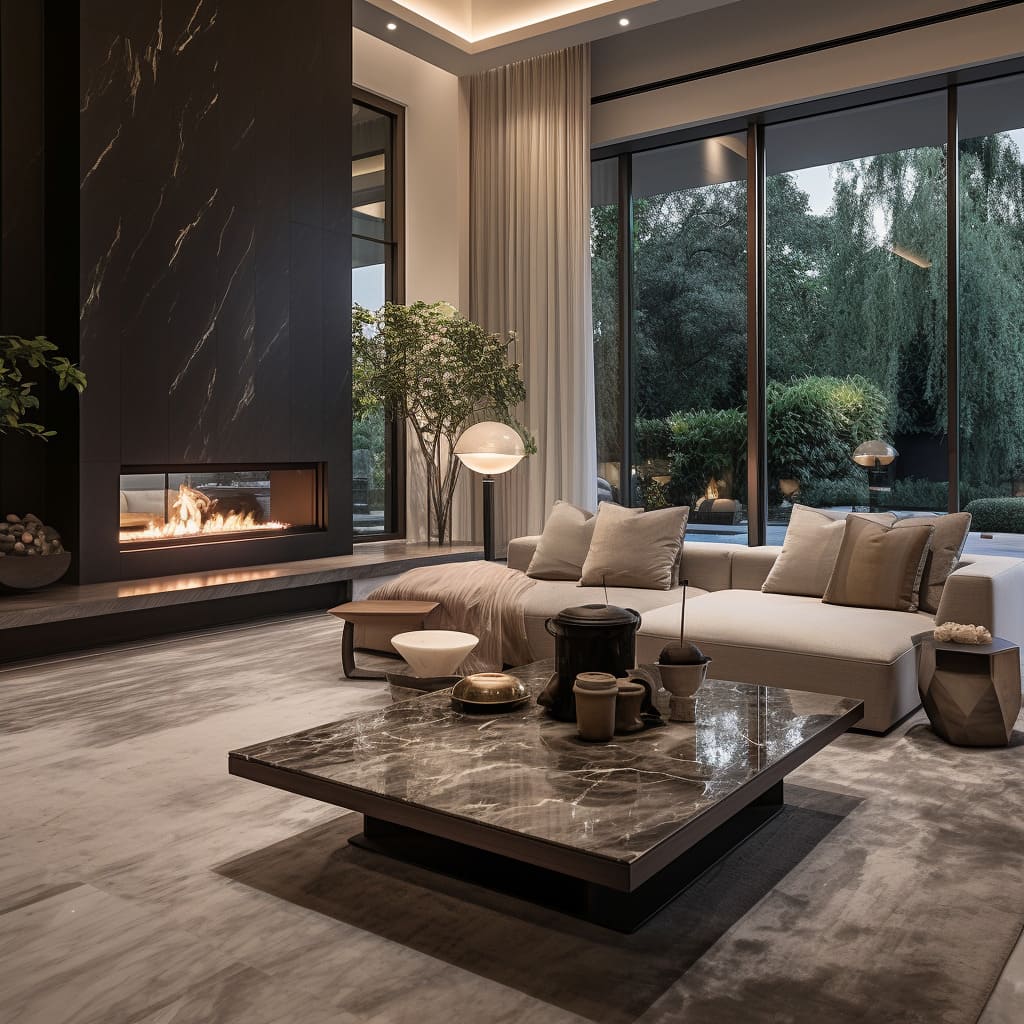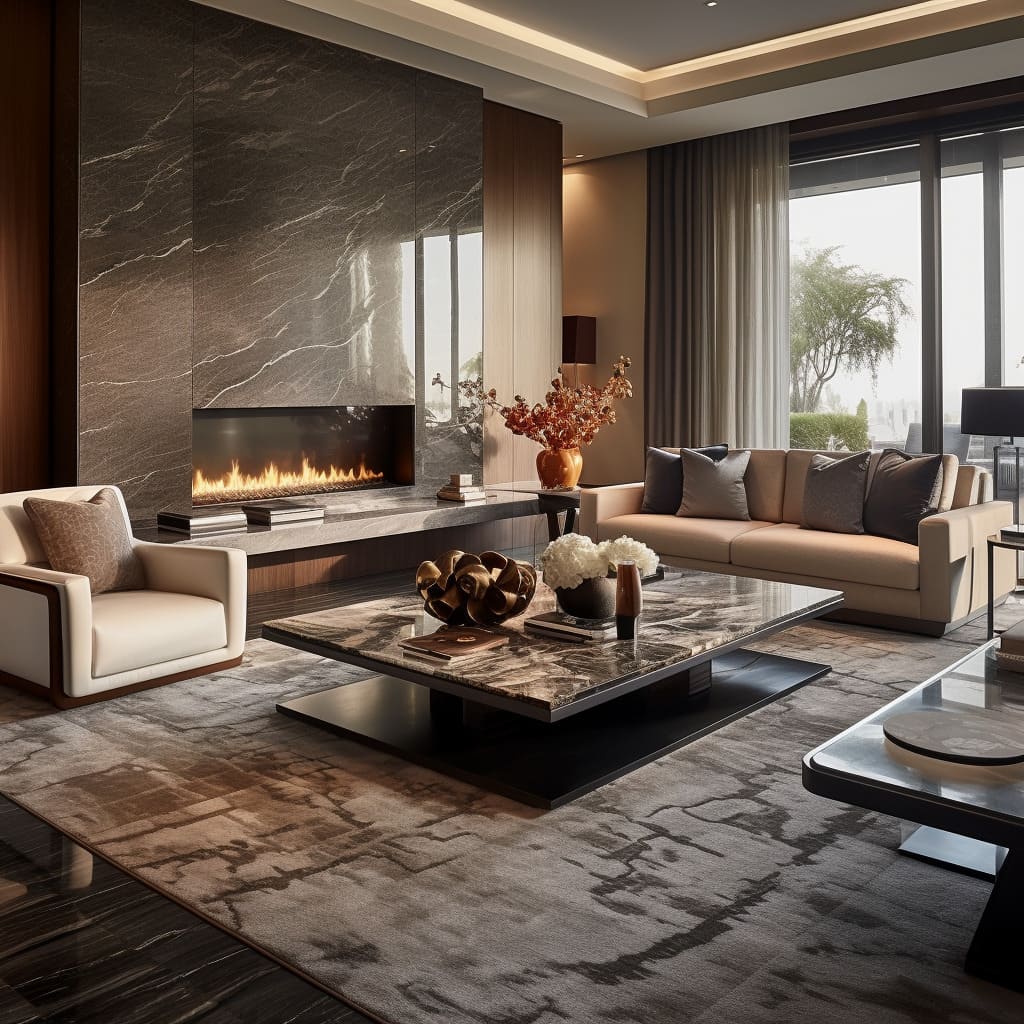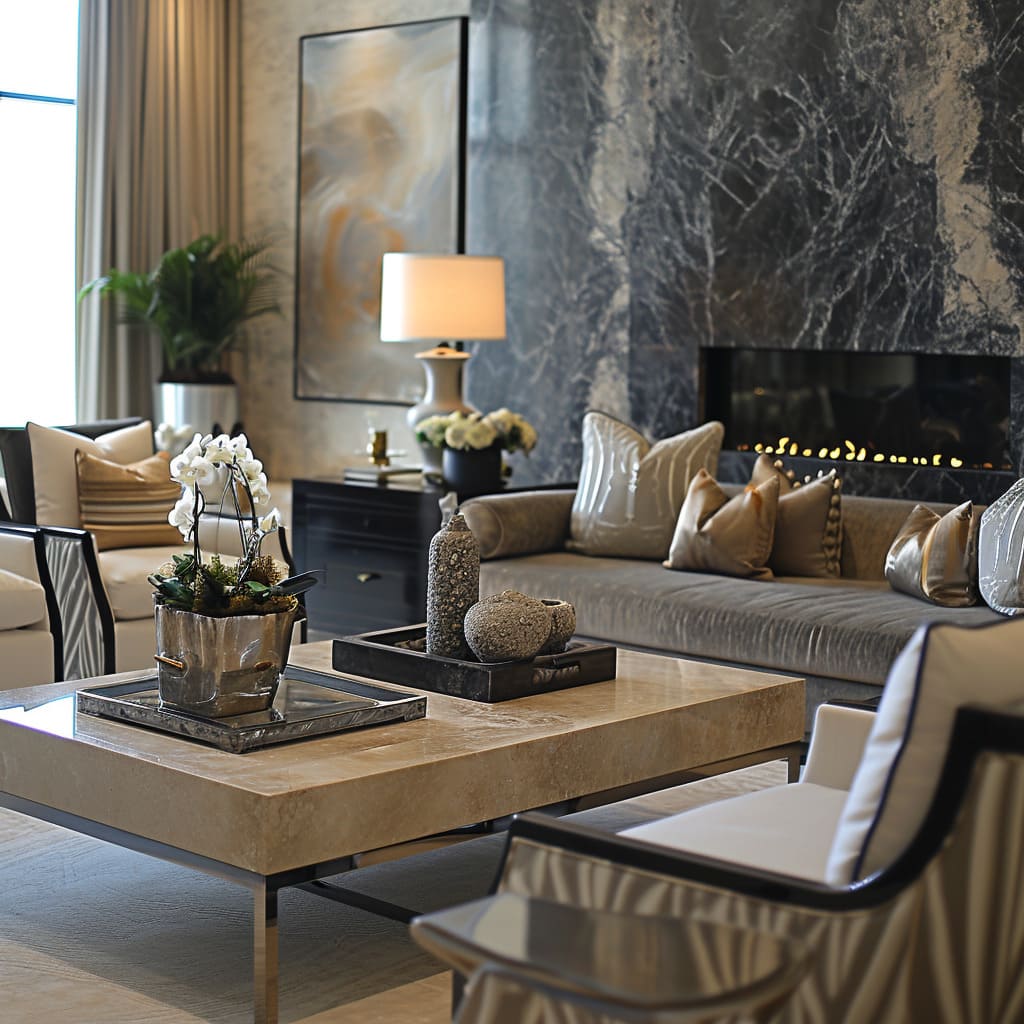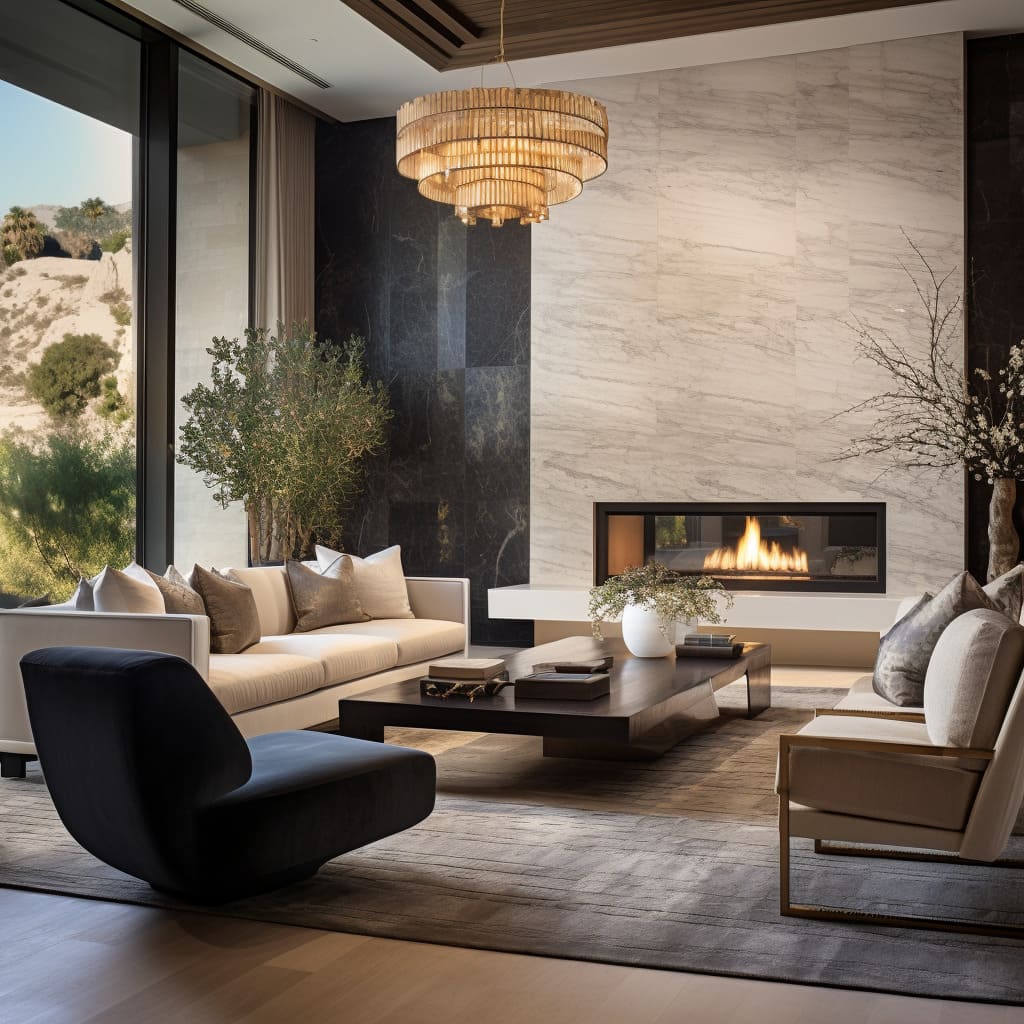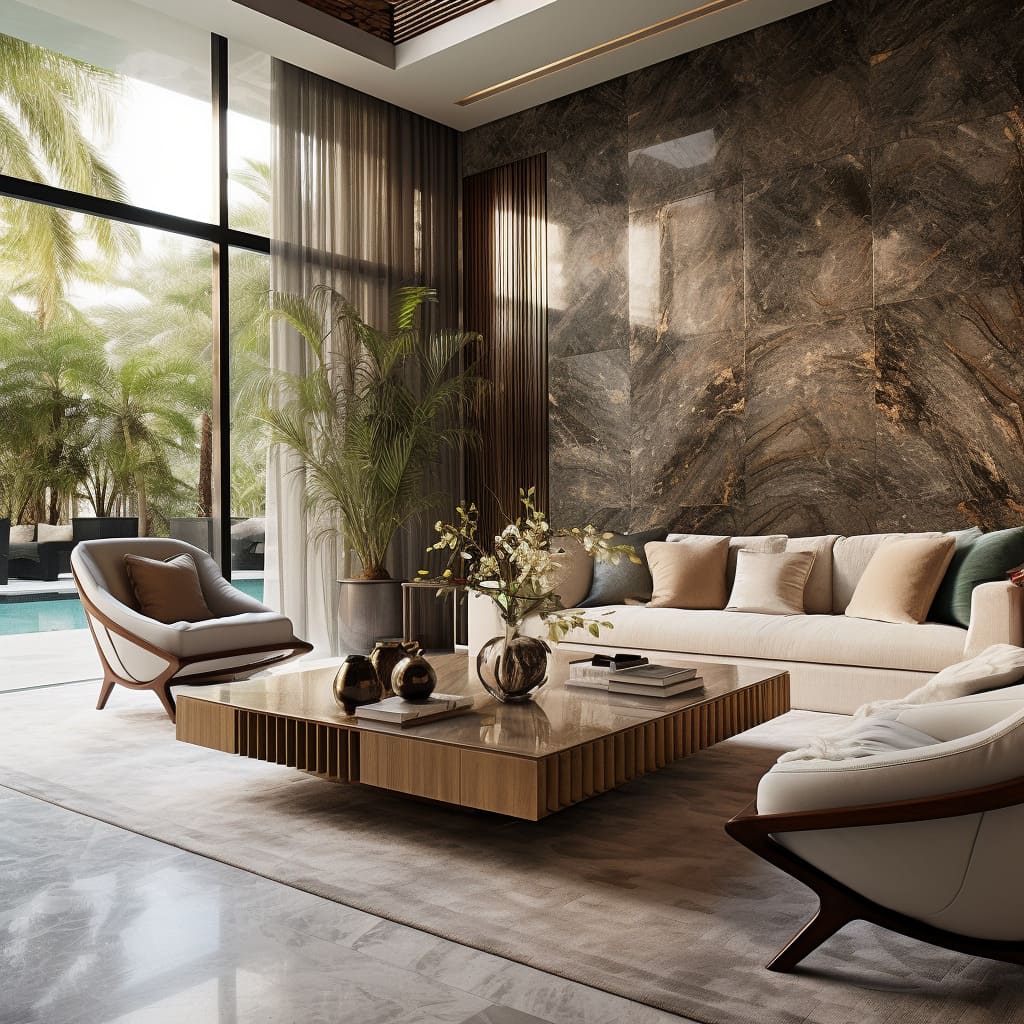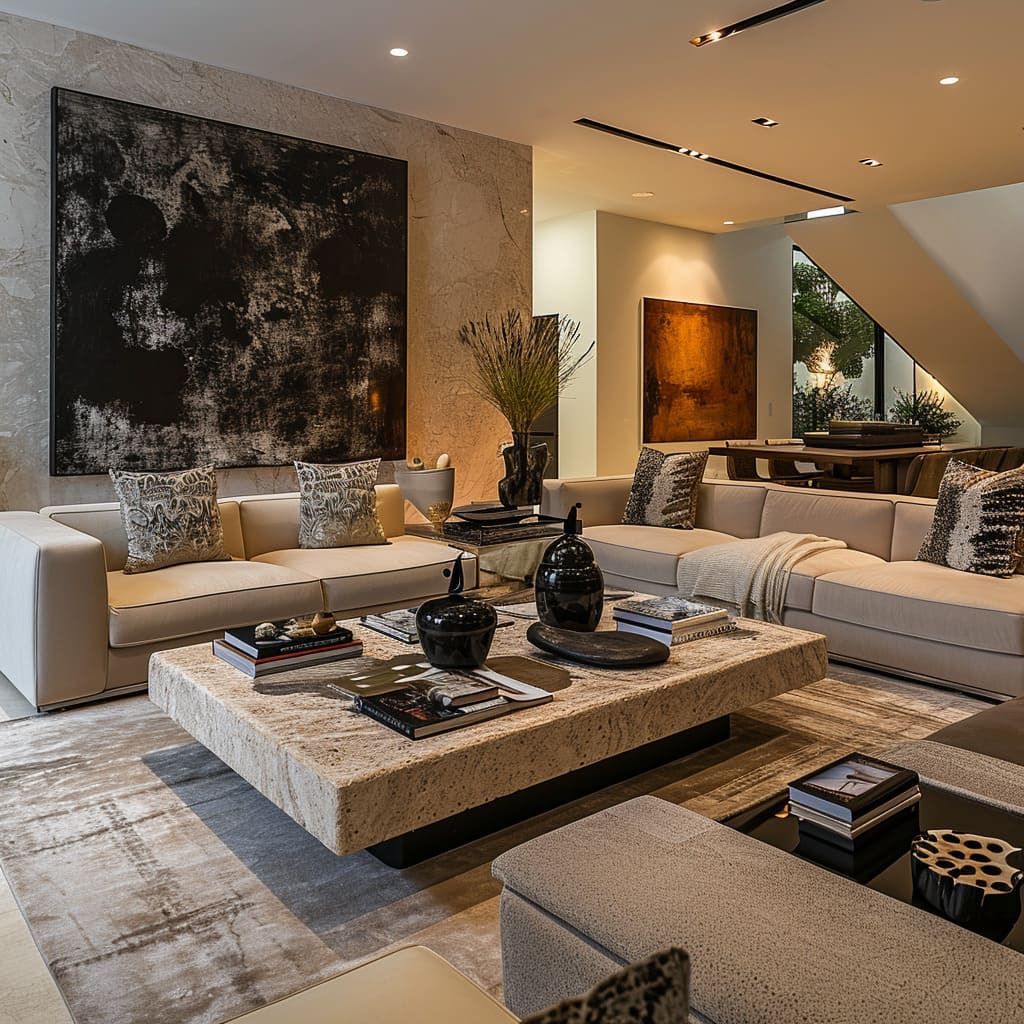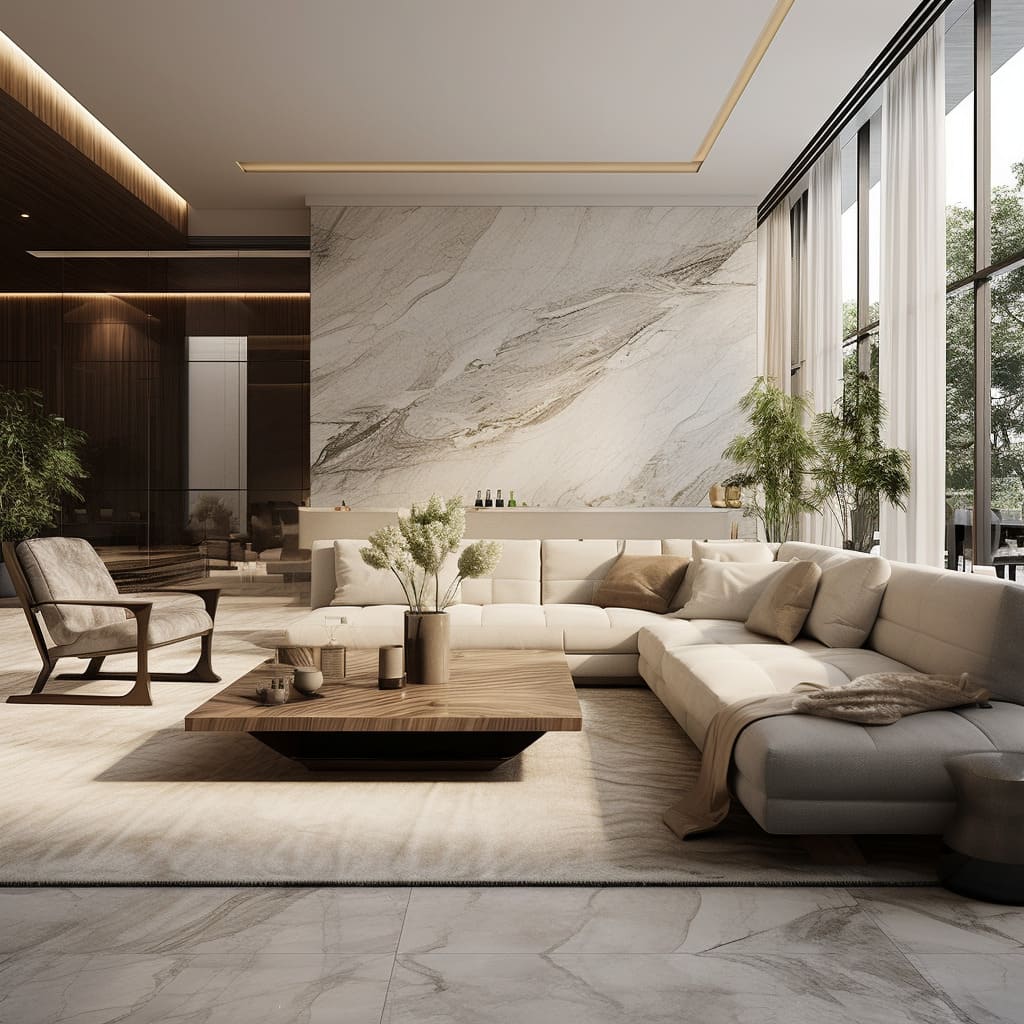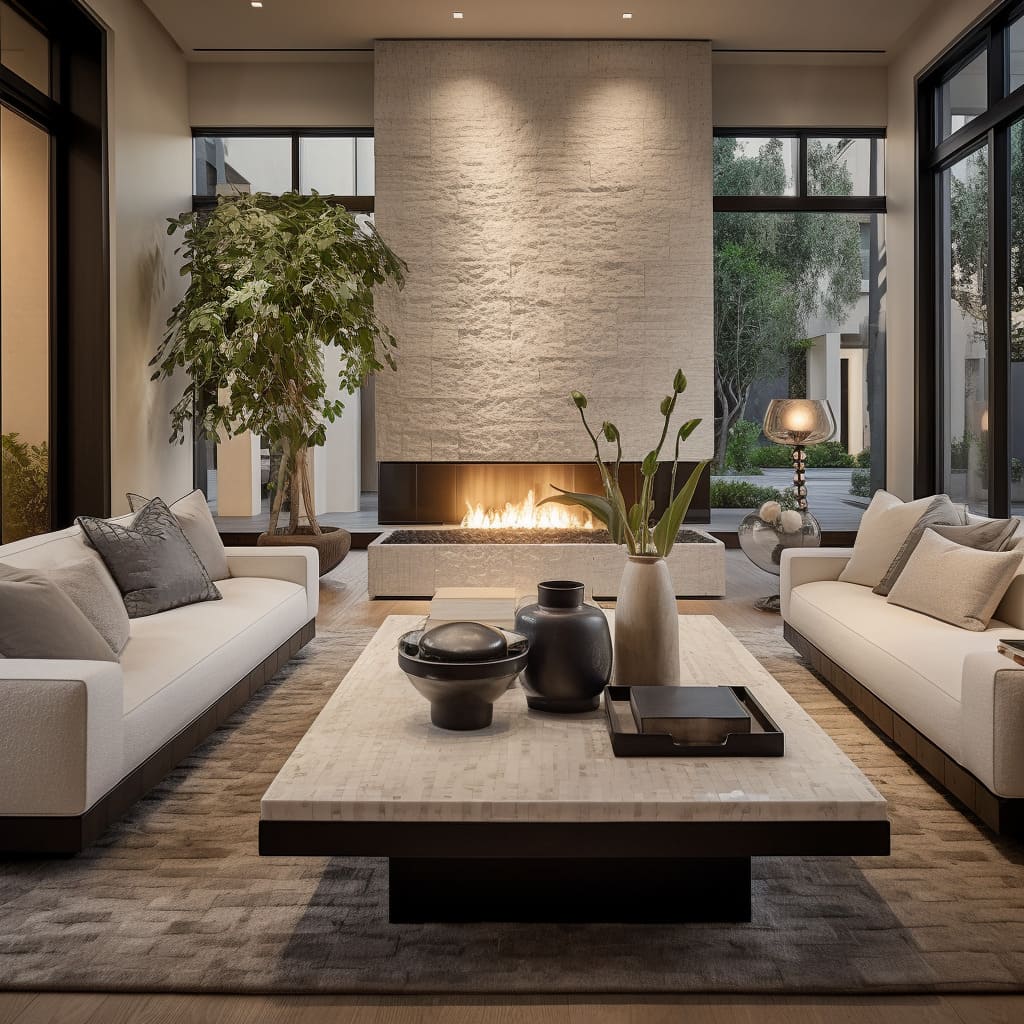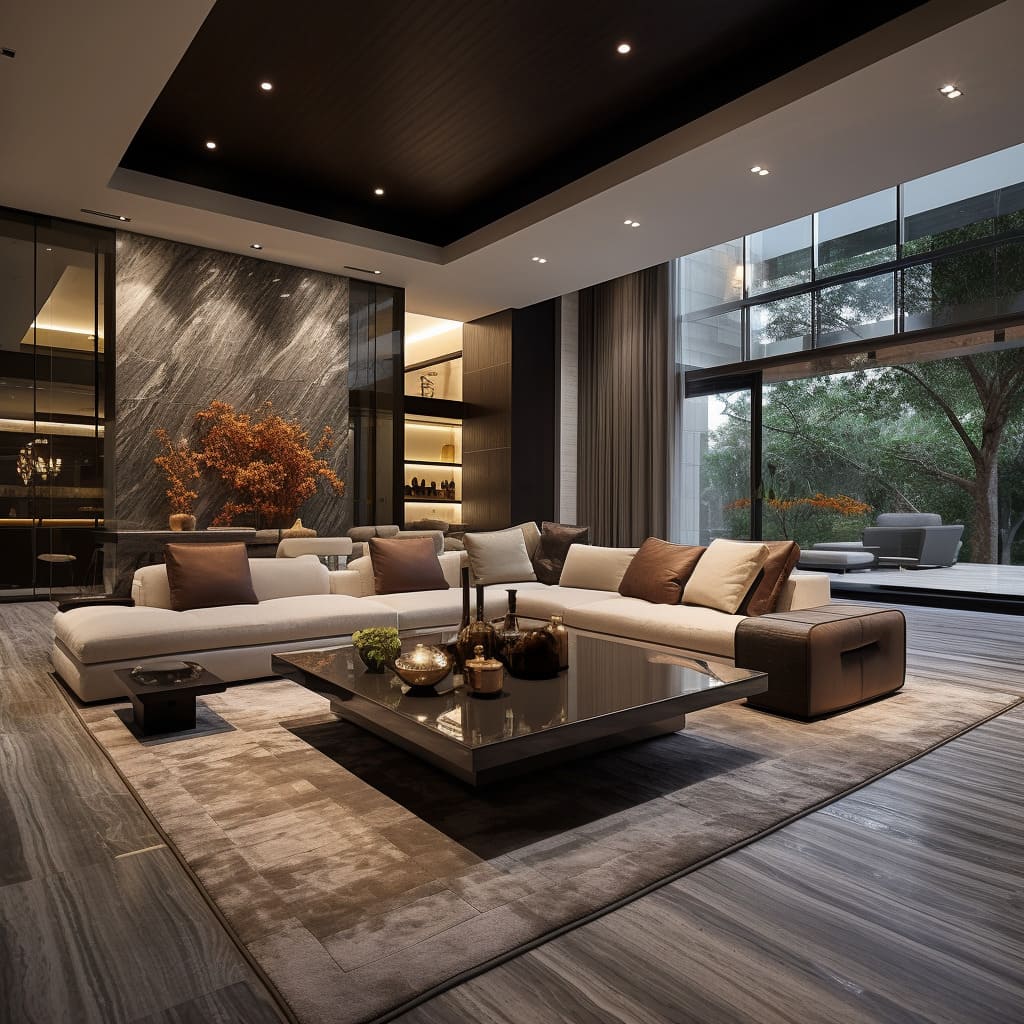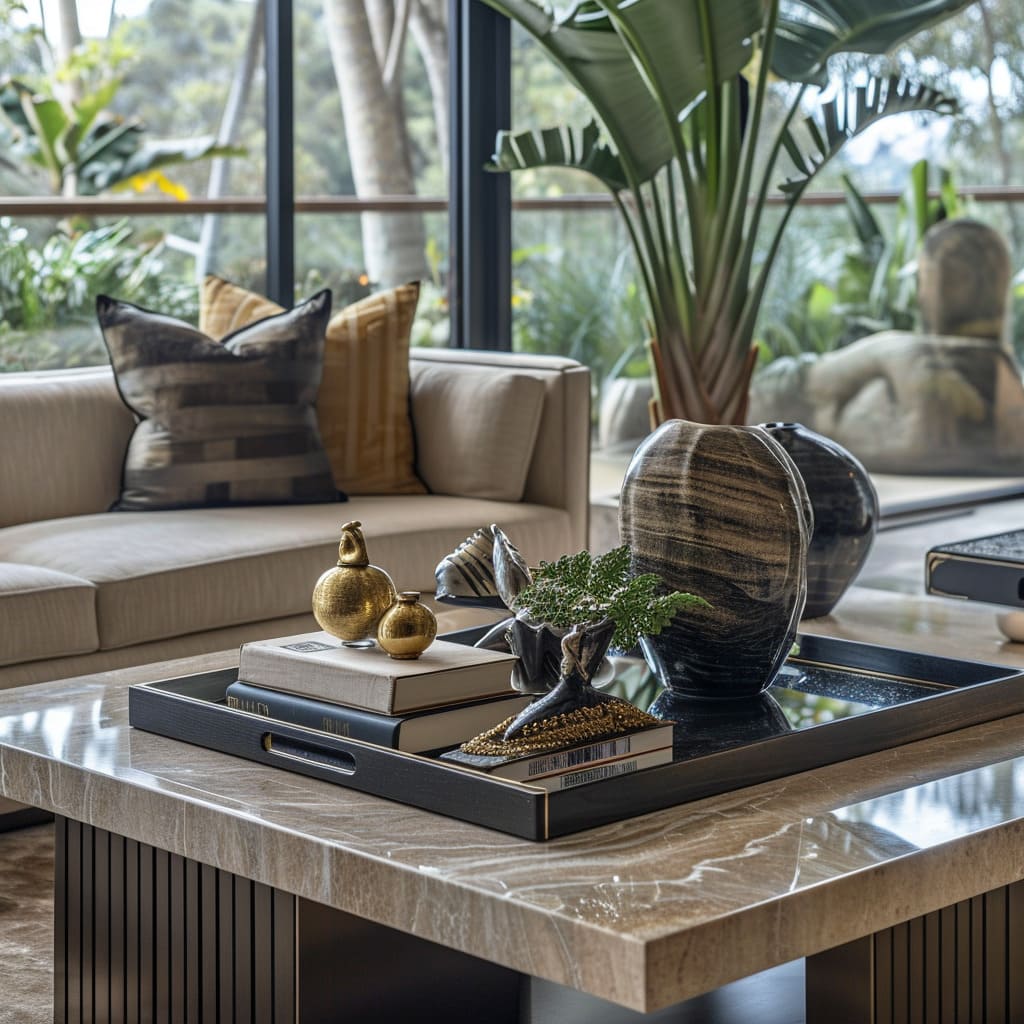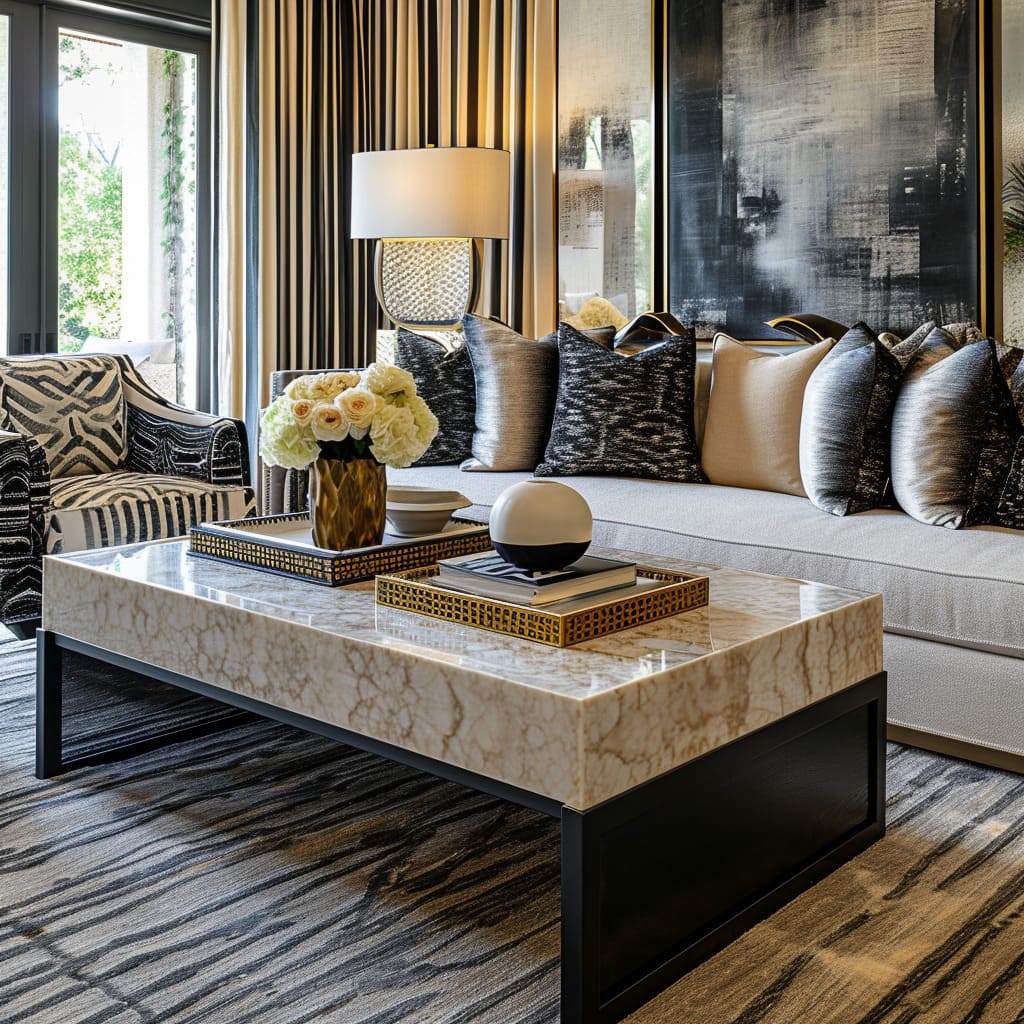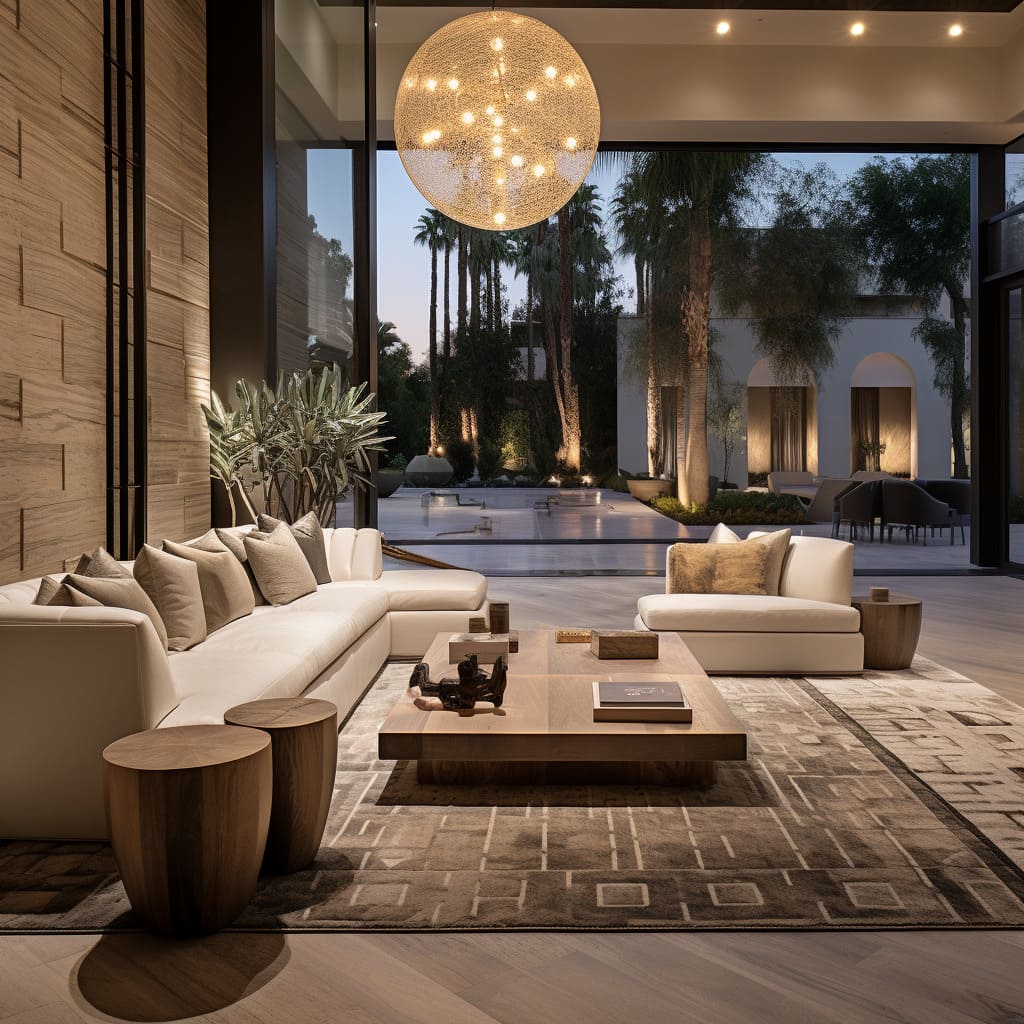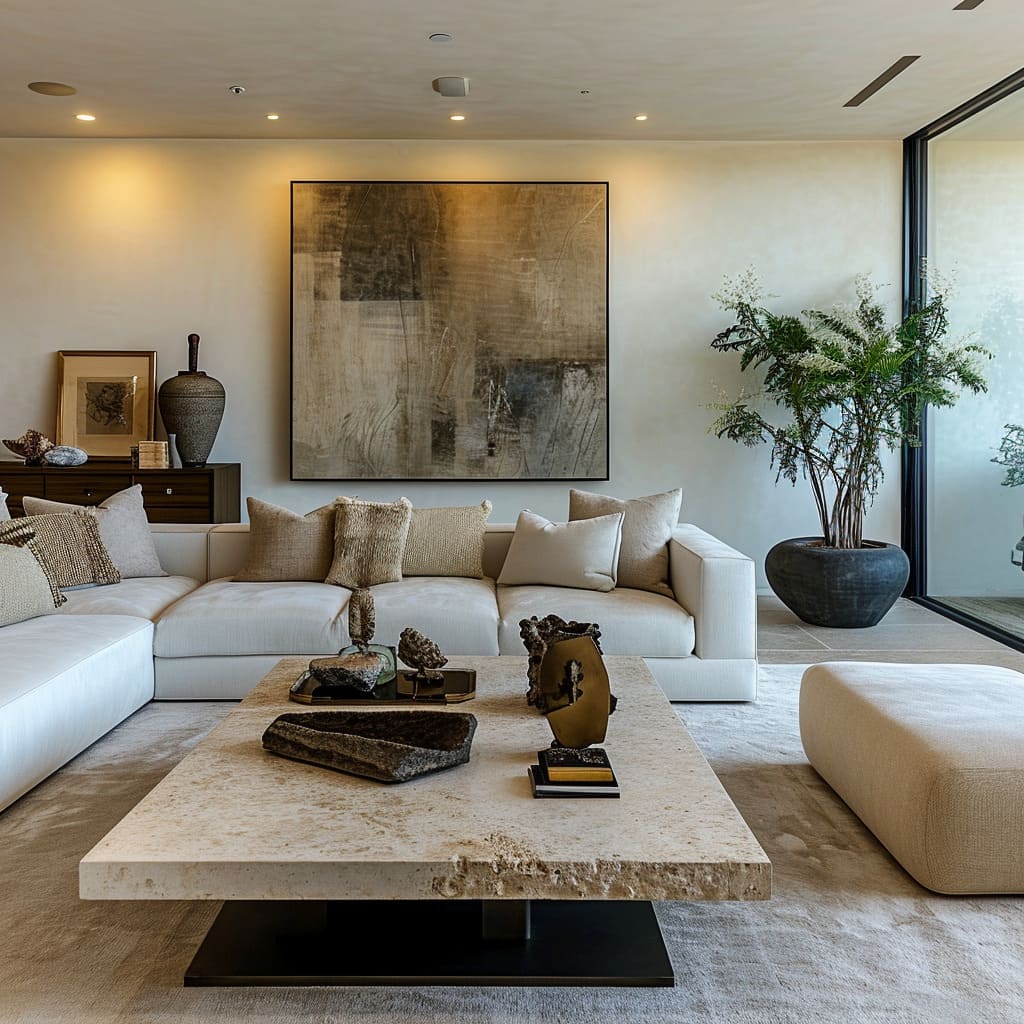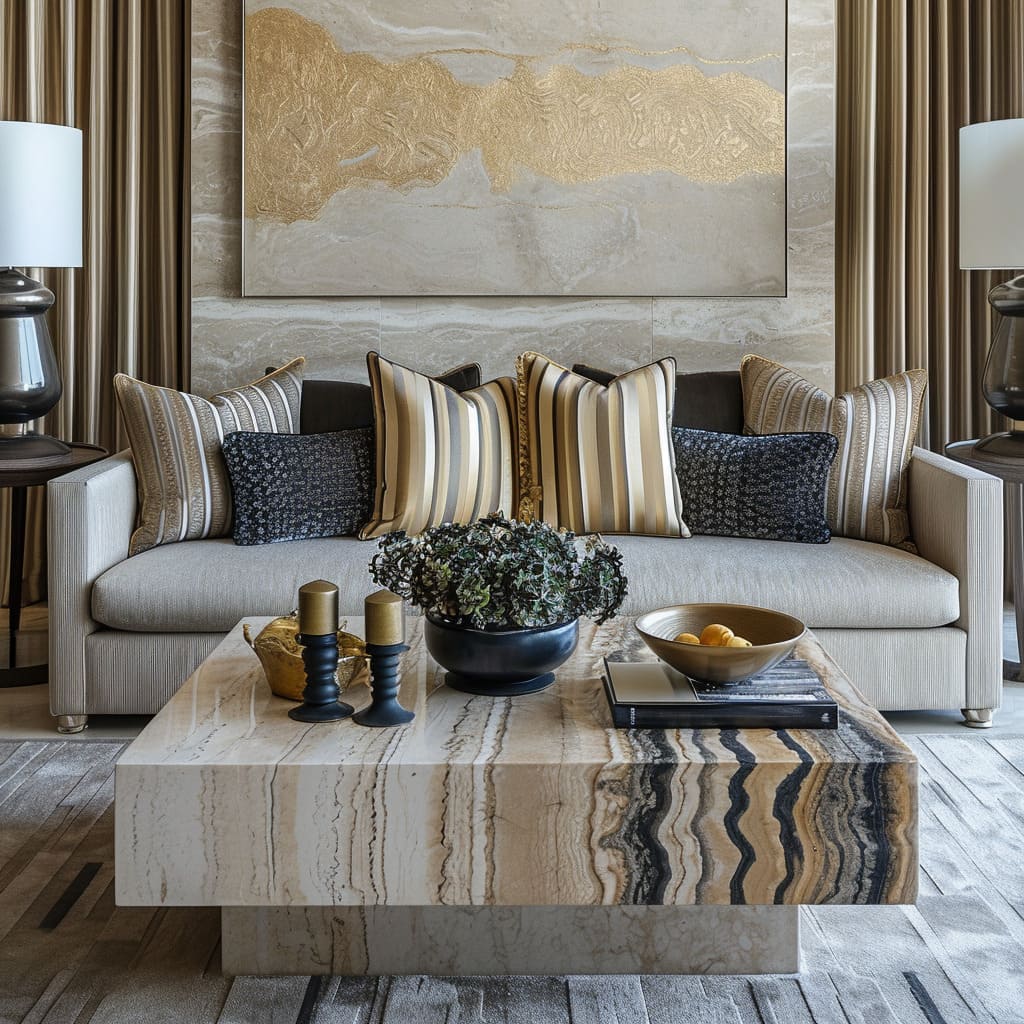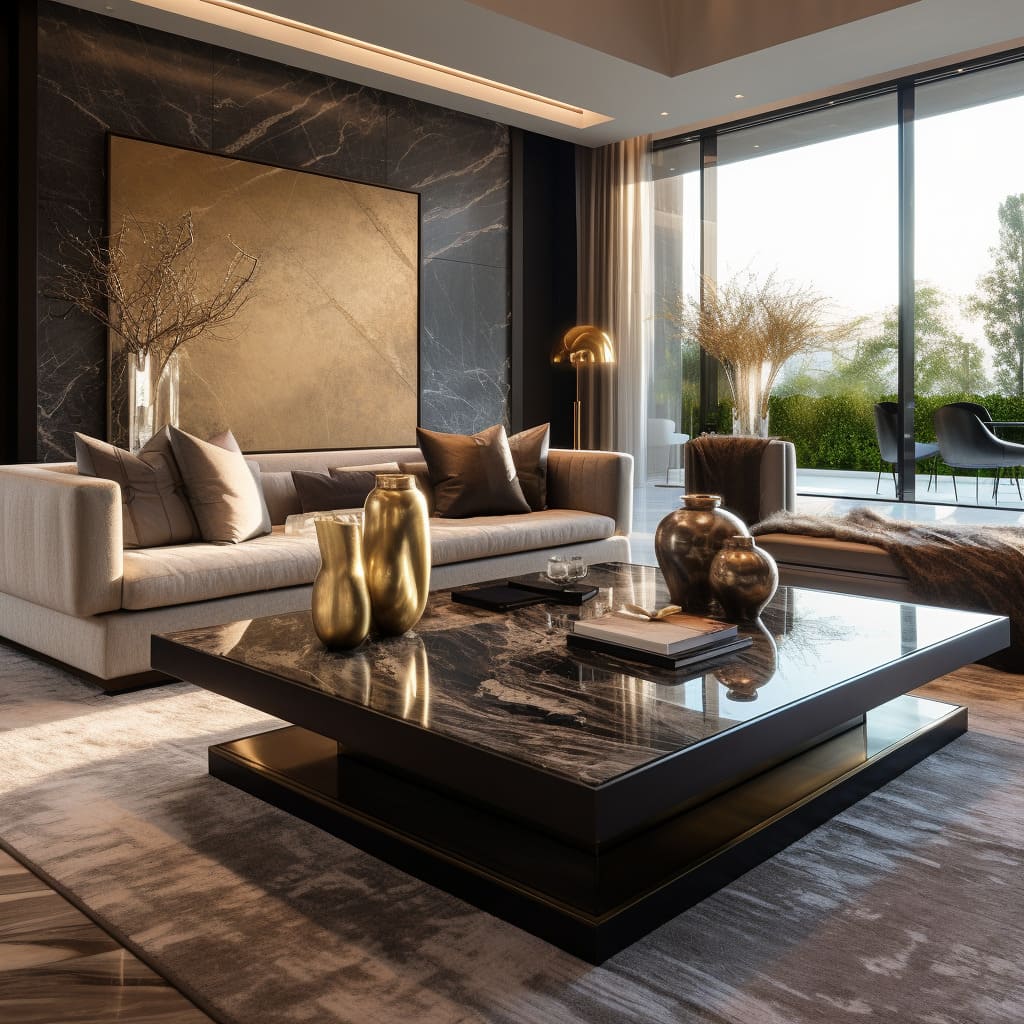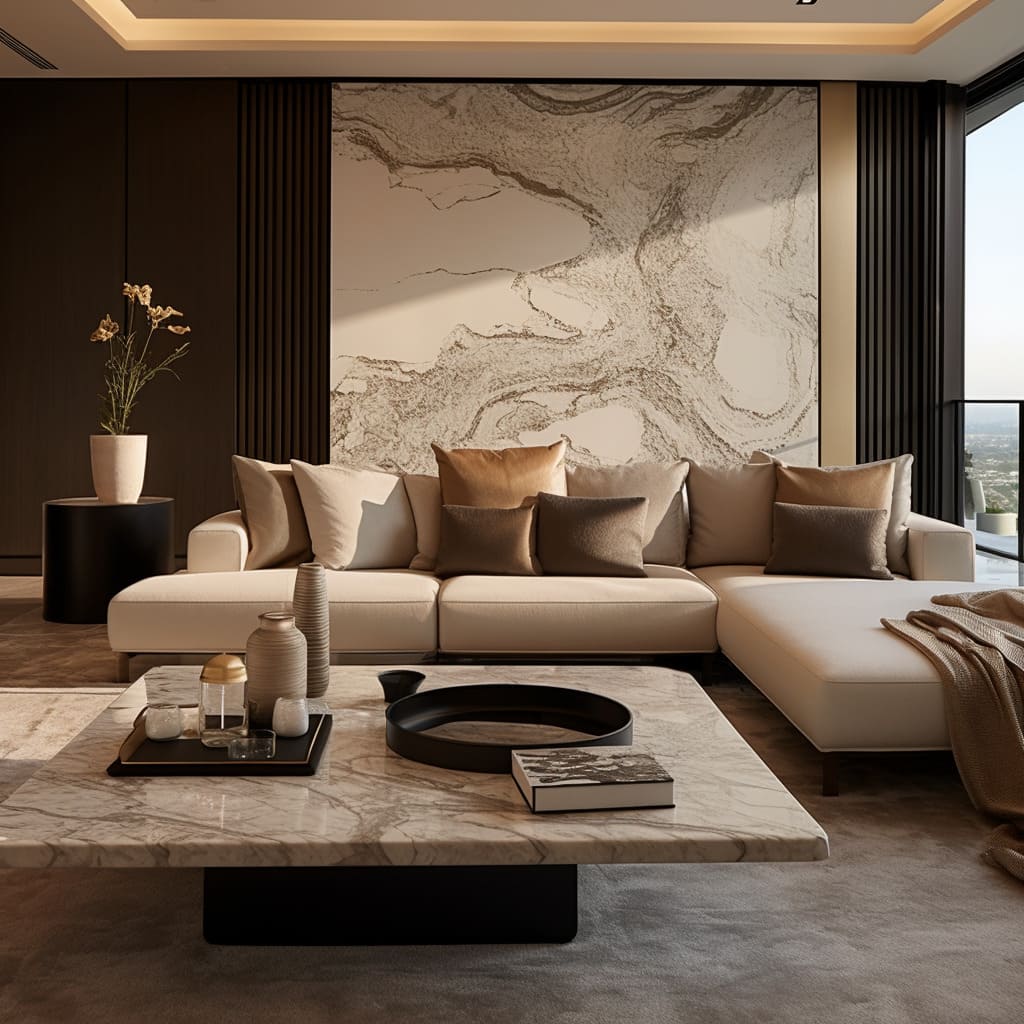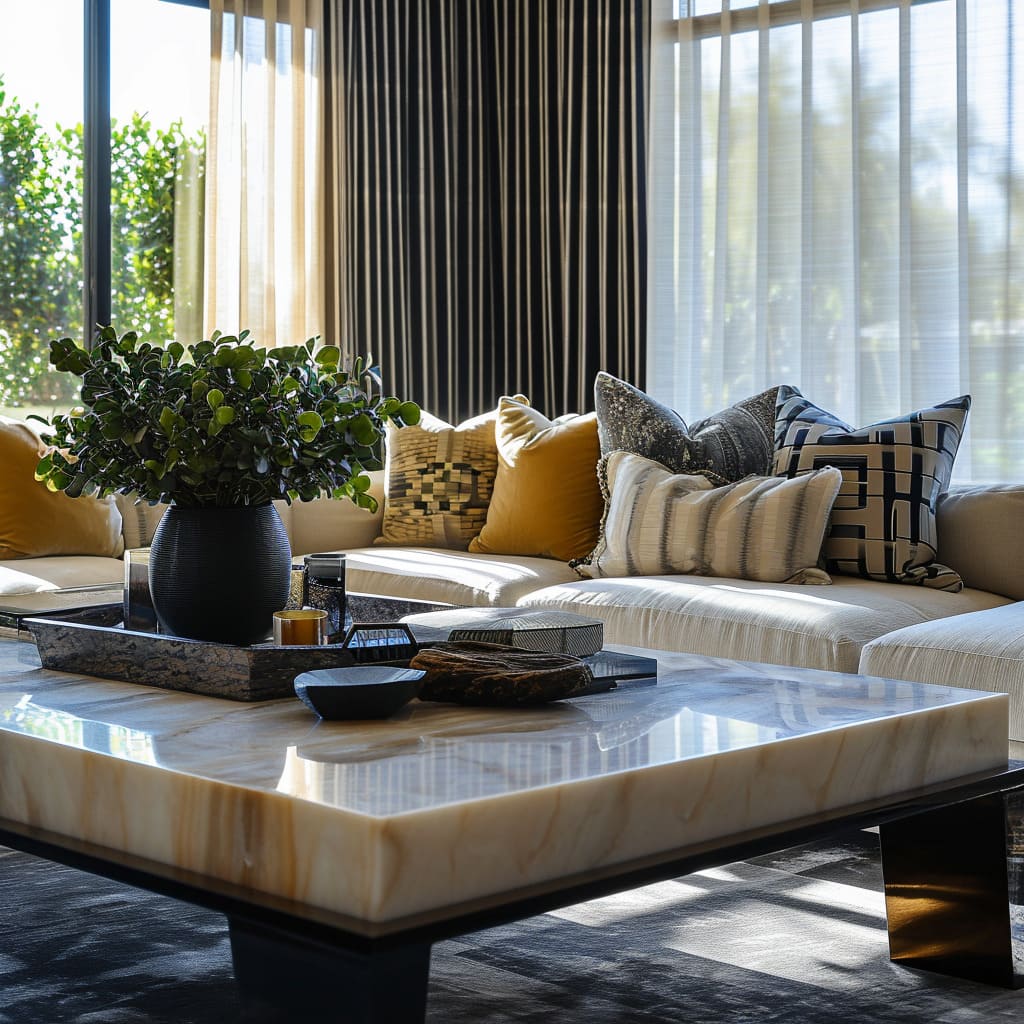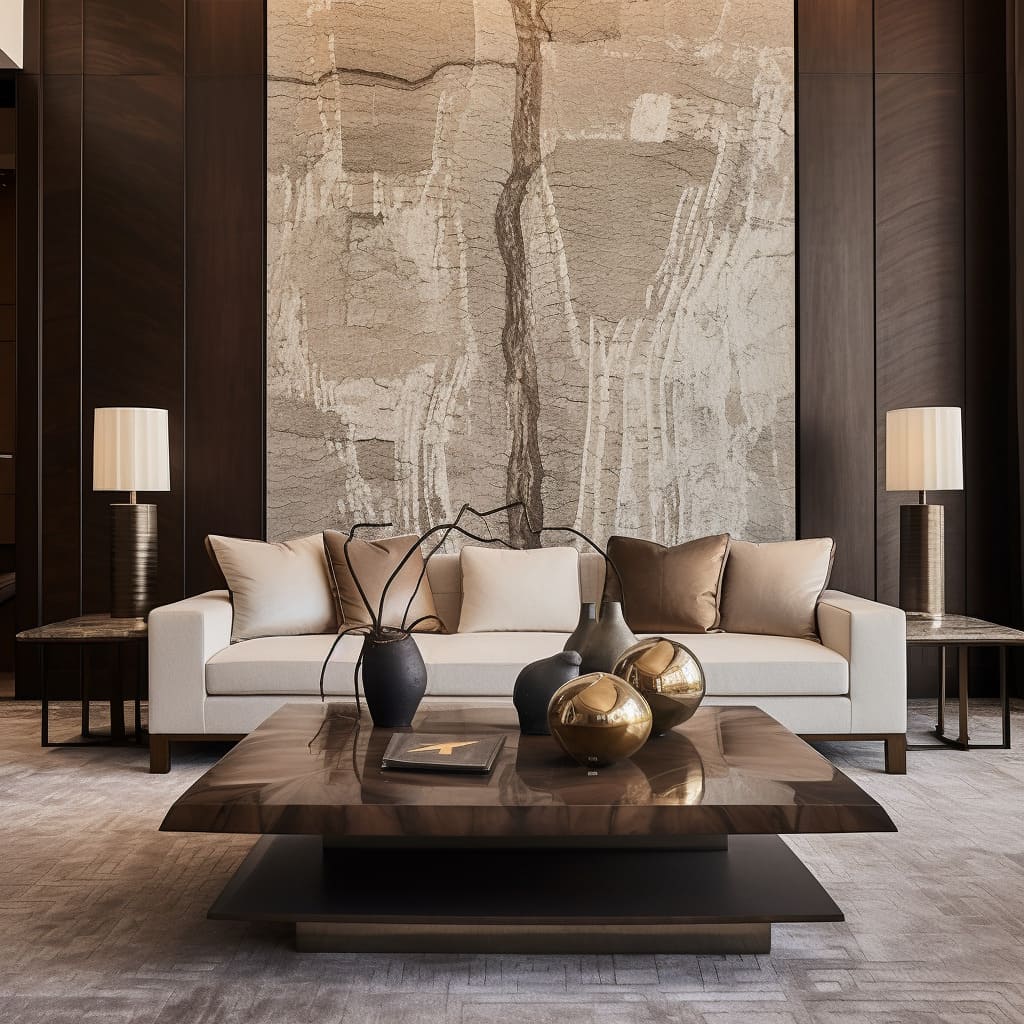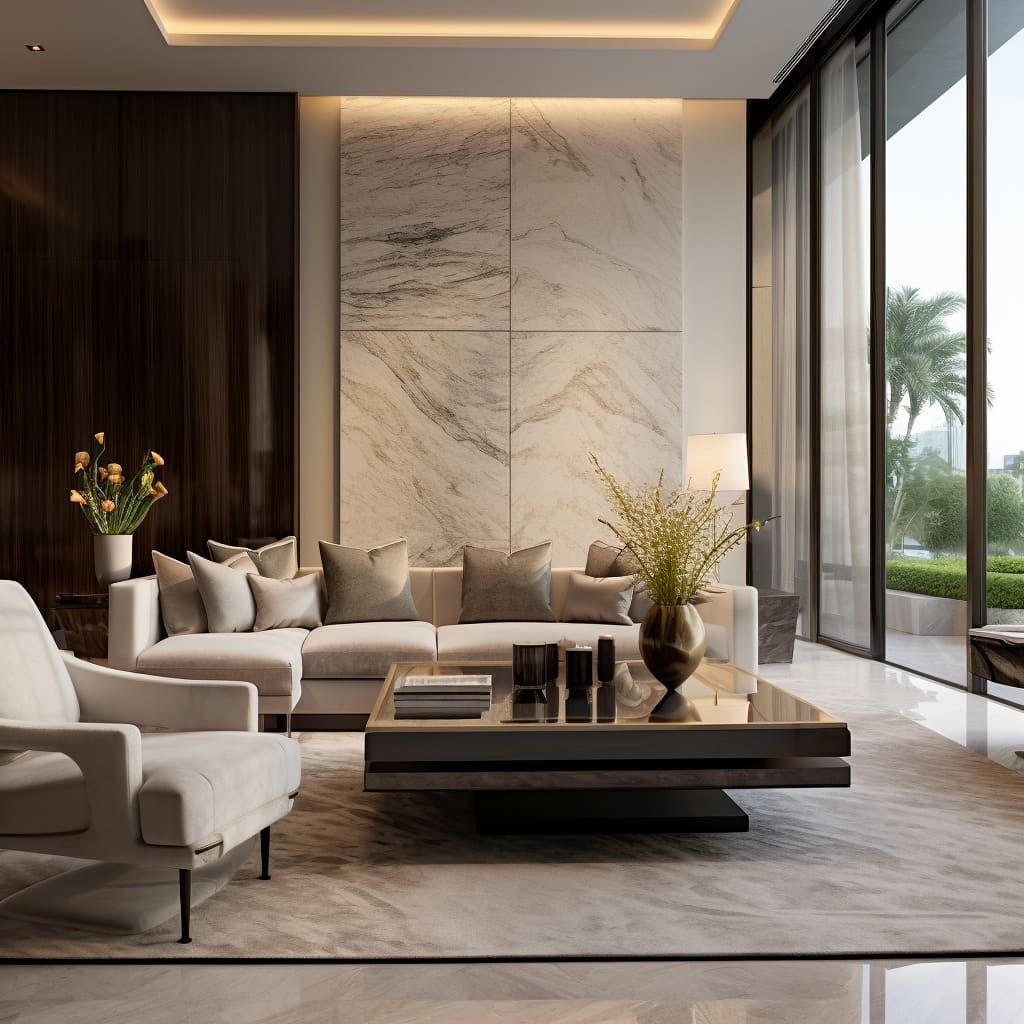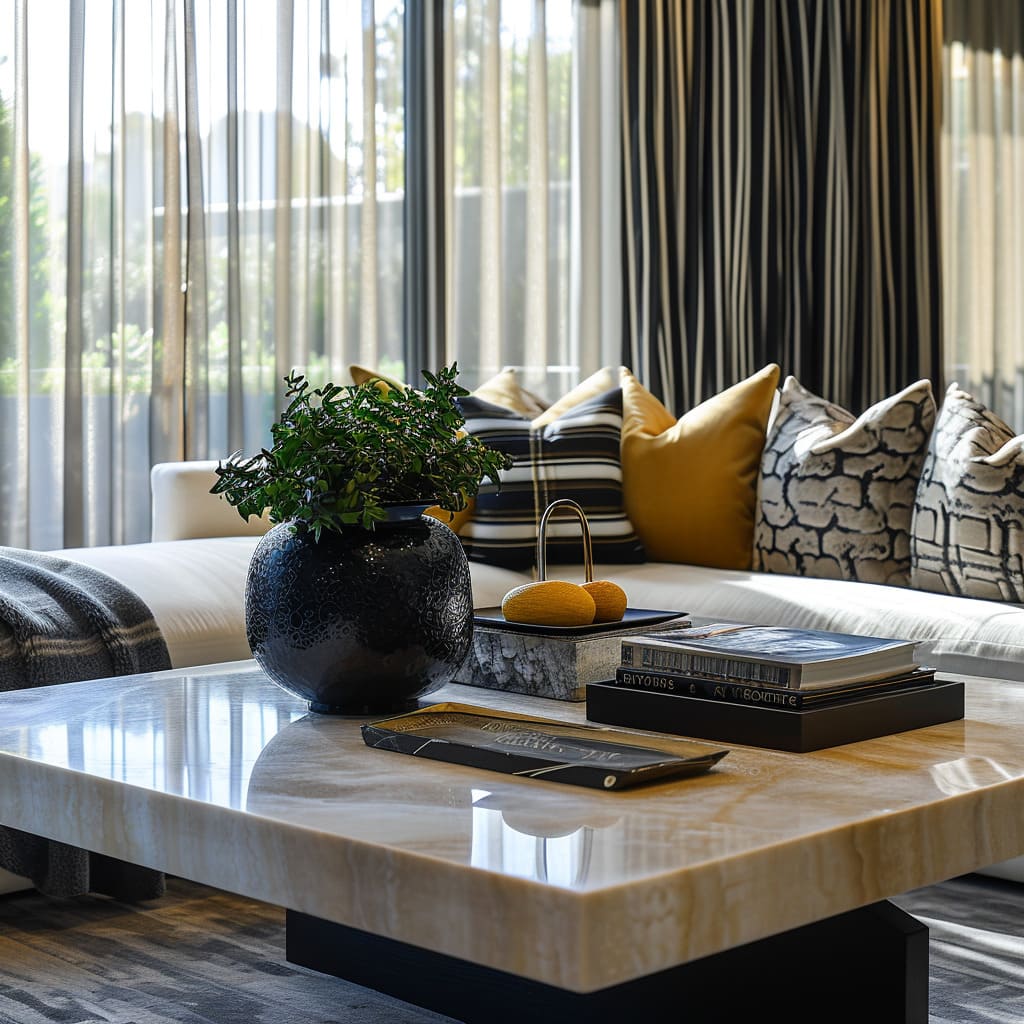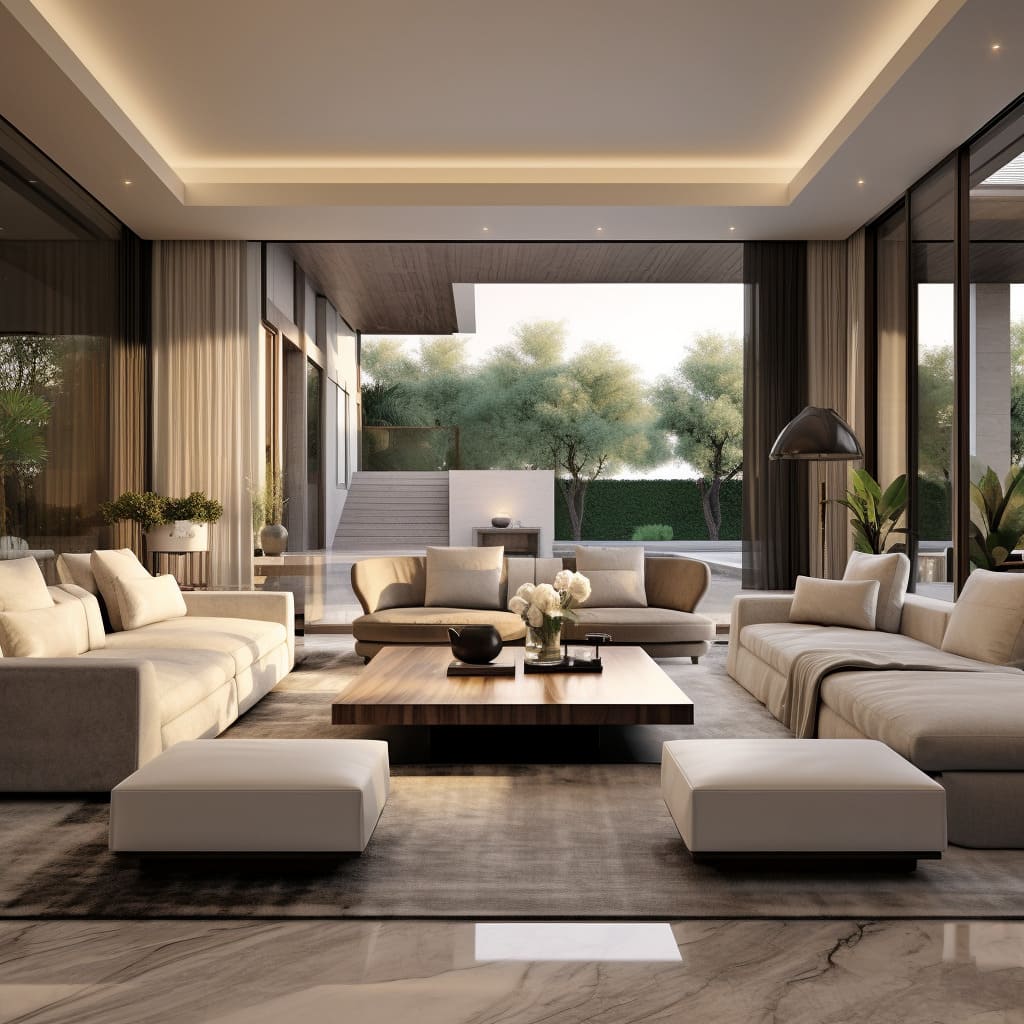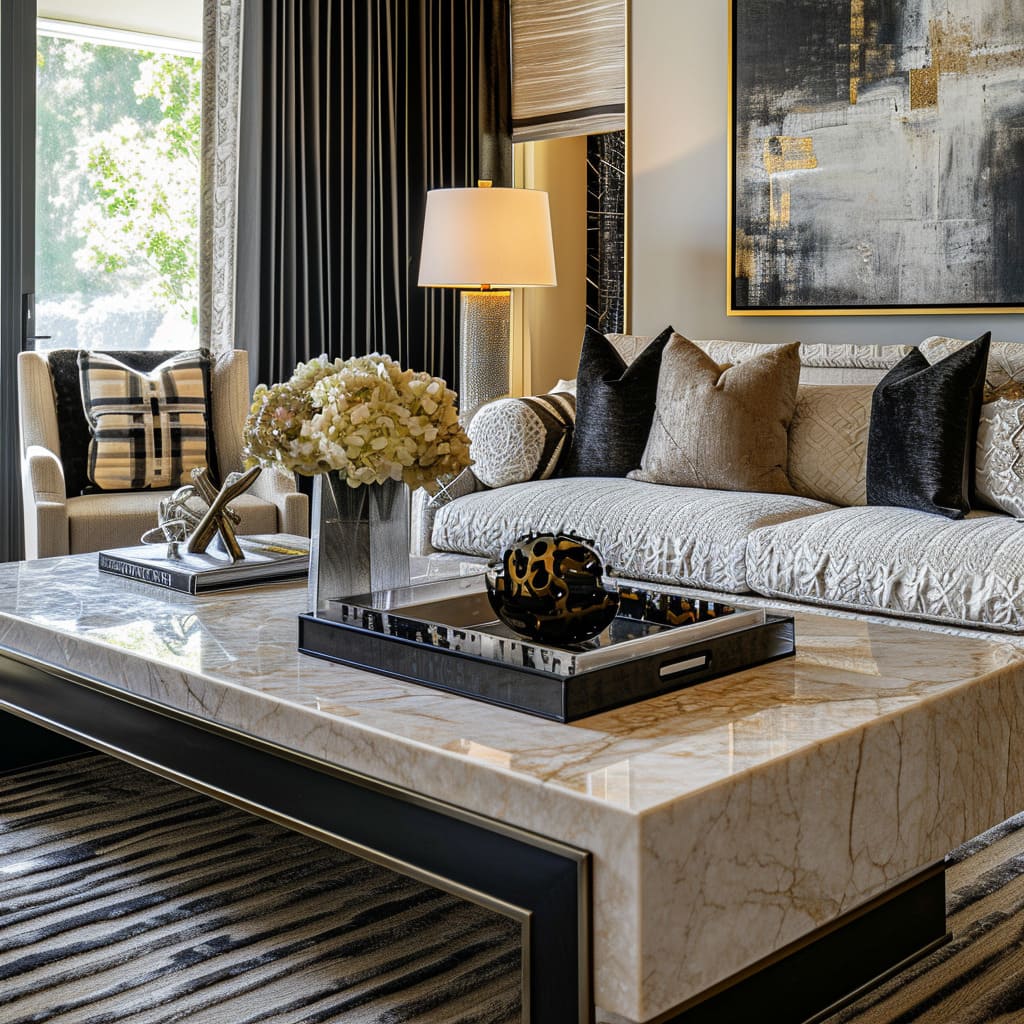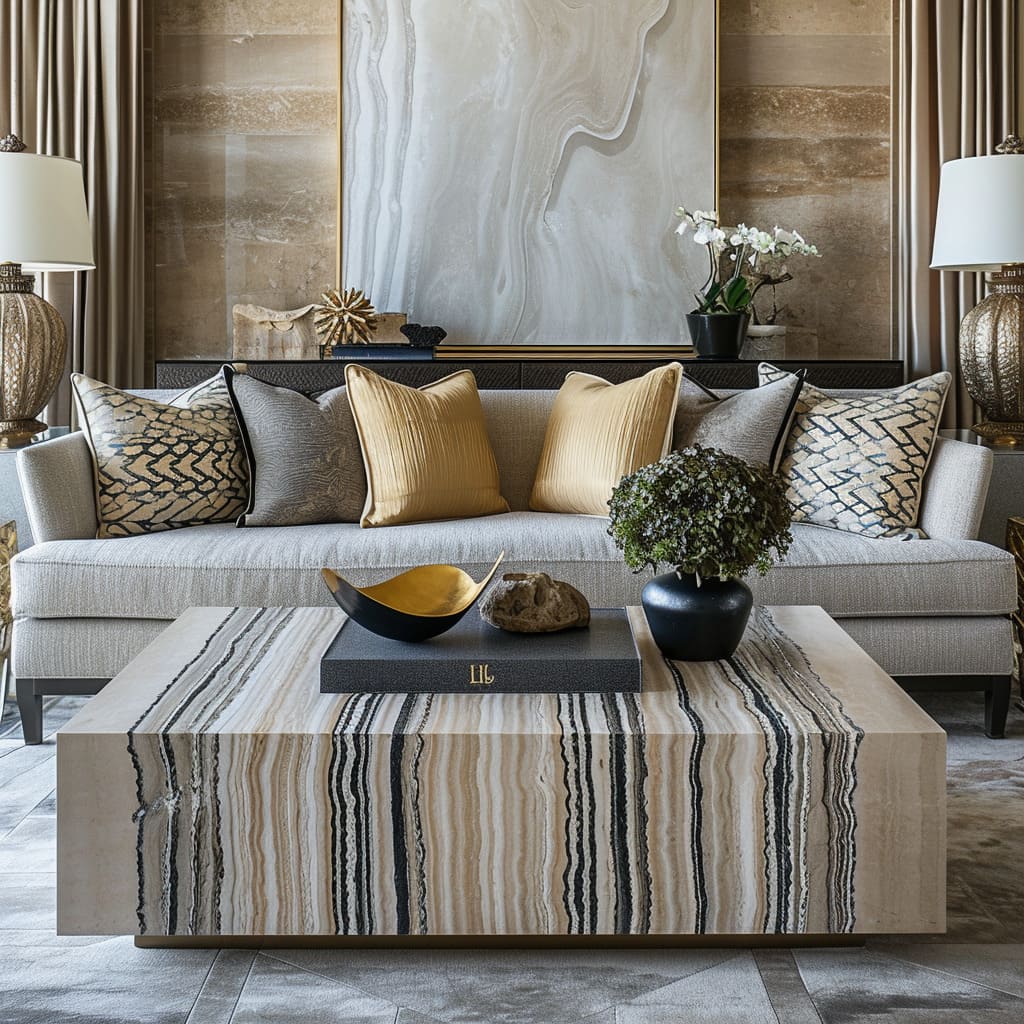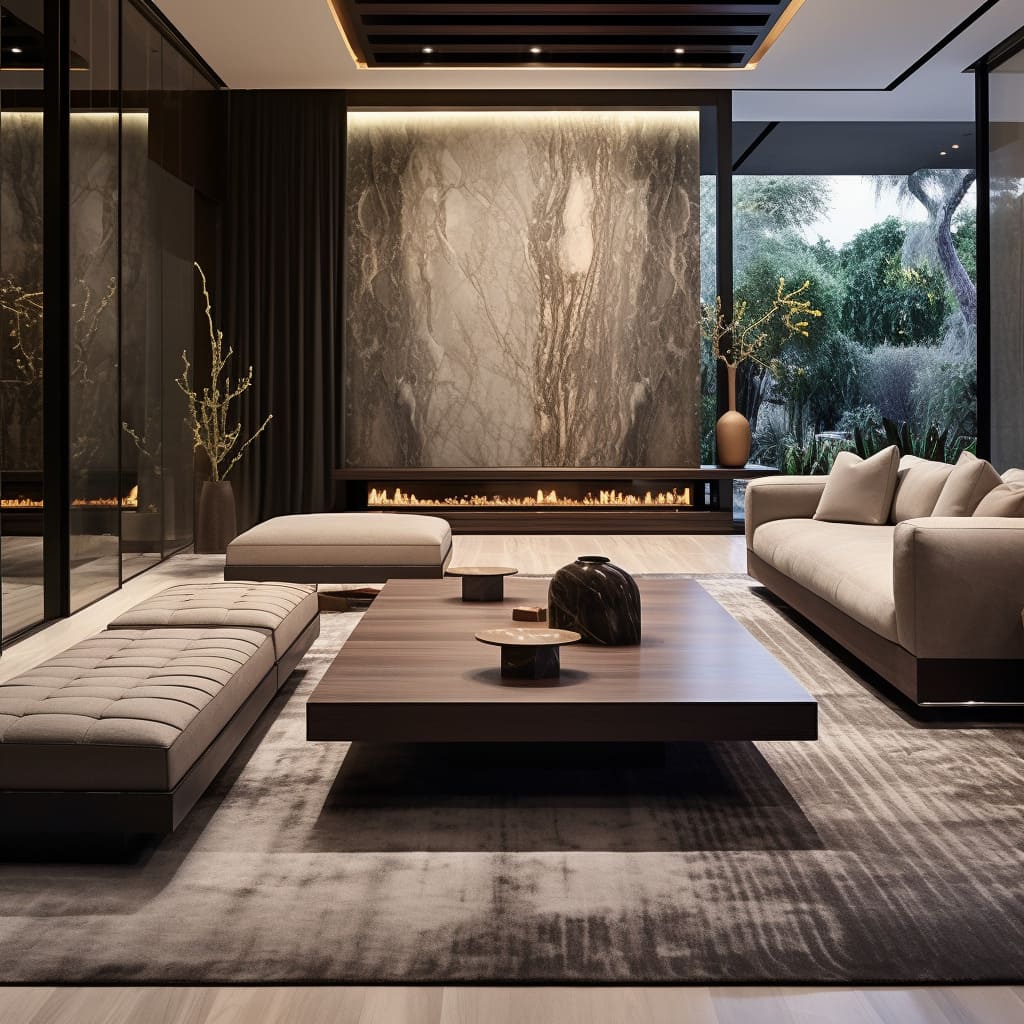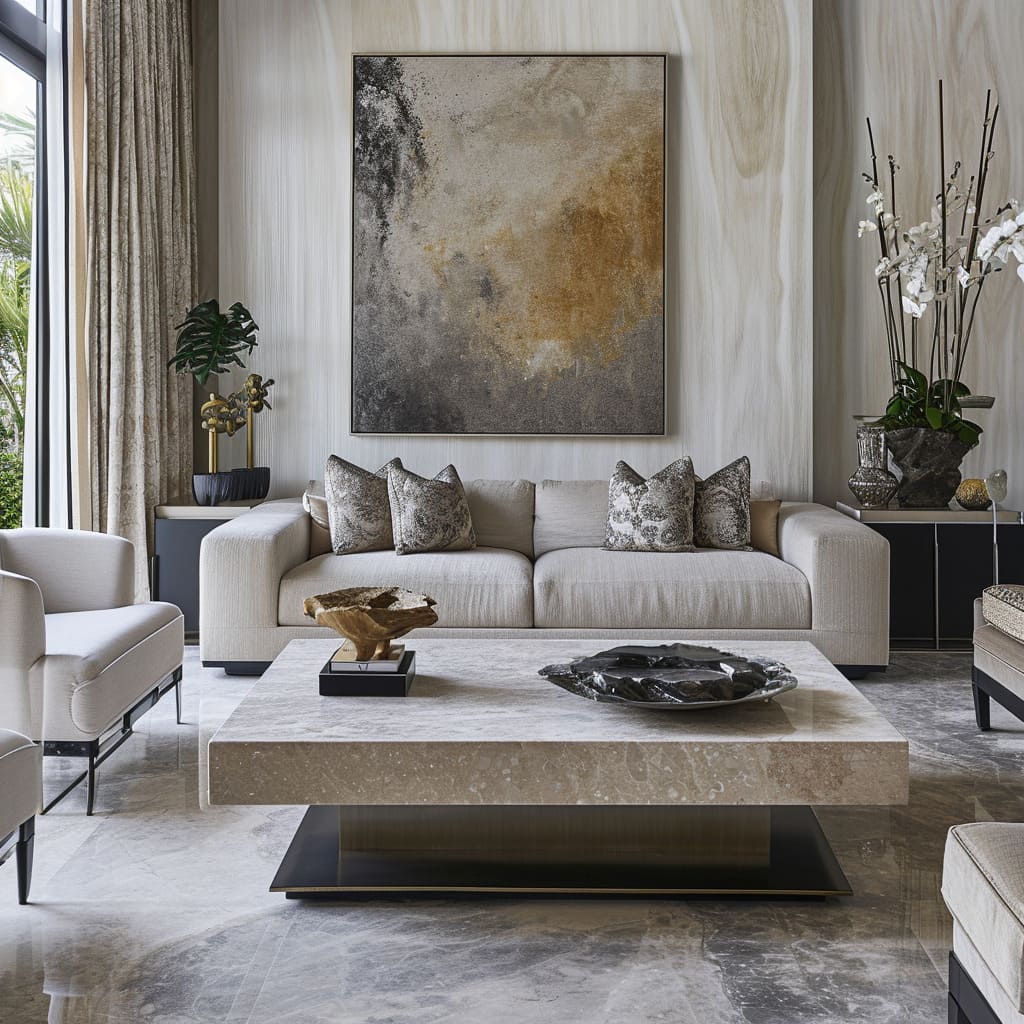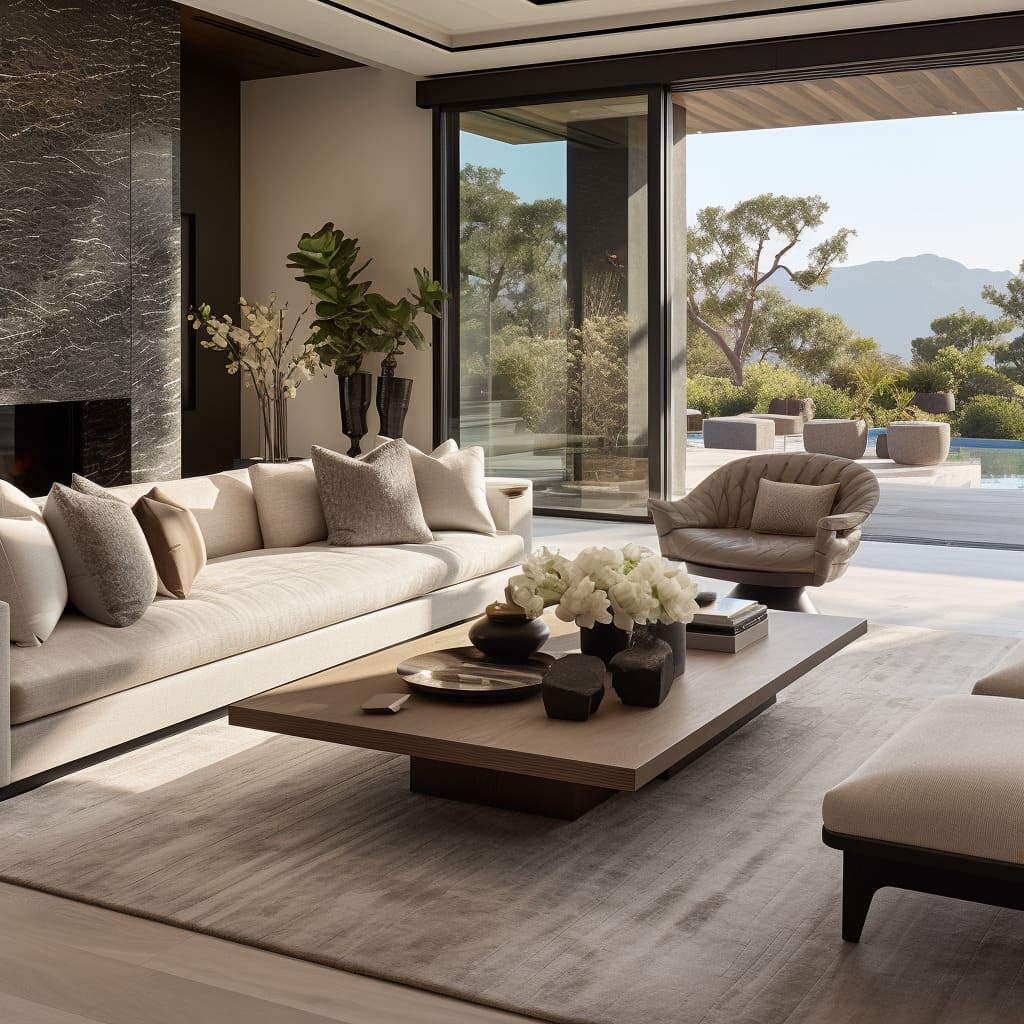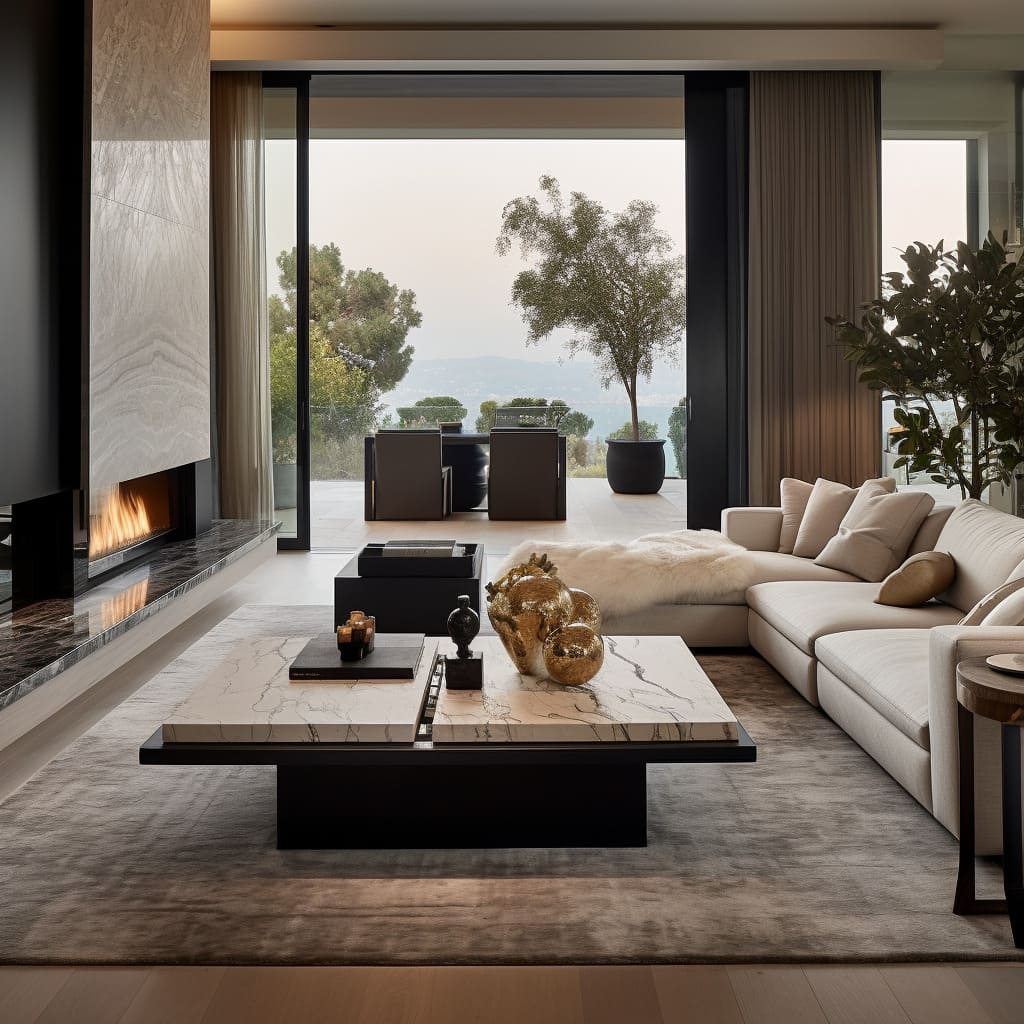In high-end interior design, the allure of natural stone stands as a cornerstone of elegance and sophistication. This article delves into the myriad ways natural stone has been seamlessly integrated into luxury interiors, creating spaces that resonate with opulence, character, and timeless beauty.
The use of natural stone, a material rich in history and natural appeal, is not just a design choice but a statement of luxury and refinement.
As we explore these exquisite interiors, we witness the harmonious interplay between the earthy, enduring qualities of stone and the refined elements of modern design. From marble’s majestic veining to granite’s robust texture, natural stone brings an unparalleled depth and uniqueness to every space it adorns.
Accompanied by richly textured fabrics, elegant furnishings, and thoughtful layouts, these interiors are more than just living spaces; they are artful expressions of style and luxury.
This article aims to unveil the secrets behind the enduring popularity of natural stone in luxury design. We will explore the various types of natural stone used, the innovative ways designers have incorporated them into luxury settings, and the overall impact these elements have on the aesthetics and functionality of high-end interiors.
Join us as we journey through a world where nature’s creations meet human craftsmanship, culminating in interior designs that are as breathtaking as they are enduring.
The Elegance of Natural Stone in Luxury Interiors
The increasing preference for natural stone in luxury interior design across the United States underscores its aesthetic allure, durability, and distinctiveness. This versatile material is used in various applications like cladding, flooring, and as a unique element in furniture, such as coffee tables, to enhance the opulence of living spaces.
Different types of natural stones, each with unique textures, colors, and veining patterns, include marble, granite, limestone, and travertine. Marble, particularly, is synonymous with luxury, offering a smooth finish and intricate patterns that lend an elegant touch to walls, countertops, and fireplace surrounds.
Its veining adds depth, creating a focal point in any space.
Granite, celebrated for its resilience, is a top choice for kitchen countertops in high-traffic areas. Meanwhile, limestone and travertine provide a more subdued luxury with their subtle textures, making them ideal for practical yet stylish flooring.
The practicality of natural stone extends beyond aesthetics. It is easy to maintain, improves indoor air quality by not harboring dust or allergens, and, in the case of flooring, adds both visual and functional value.
Natural stone coffee tables, characterized by their robustness, anchor a room’s decor with a surface that is both timeless and durable.
These luxury interiors often blend natural stone with other materials like wood and metals, creating a balance between modernity and timelessness. The tactile contrast provided by these combinations, along with plush textiles like sofas and curtains, highlights the material’s versatility.
Additionally, natural stone’s ecological benefits, such as recyclability, long lifespan, and contribution to thermal mass, enhance its appeal in sustainable design.
The strategic incorporation of natural stone in luxury interiors also reflects a cultural trend towards integrating indoor spaces with the natural environment. This trend is especially evident in high-end homes in regions like Los Angeles, where maximizing natural light and outdoor views is a priority.
Overall, natural stone’s inherent beauty and versatility make it a staple in luxury interior design. Its thoughtful integration in various applications demonstrates how it can create spaces that are simultaneously modern and classic, sophisticated yet comfortable, cementing its ongoing popularity in the realm of high-end design.
Material Mix: Natural Stone and Rich Fabrics
In luxury interior design, where natural stone and richly textured fabrics are prevalent, several key features collectively define the elegance and luxury of these spaces. Here’s an overview of these pivotal elements:
Subtle Color Schemes: The interiors predominantly feature neutral colors, including beige, cream, taupe, and gray. This palette fosters a tranquil environment, allowing the rich textures and materials to take center stage without overwhelming the senses.
Metallic Highlights: Strategic use of metallic elements like brass, gold, and bronze in furniture frames, lighting, and décor infuses a modern, sophisticated flair into the spaces.
Refined Lighting: The lighting fixtures, ranging from crystal-embellished chandeliers to designer lamps, are selected for both function and aesthetic appeal. They enhance the ambiance and accentuate the interior’s best features.
Artistic Touches: The incorporation of art, such as paintings, sculptures, or decorative bowls, personalizes the space. These artistic elements complement, rather than dominate, the overall design, reflecting a well-curated style.
Symmetry in Design: A pronounced sense of symmetry and orderly layout in furniture and décor arrangement creates balanced, harmonious spaces that are visually satisfying. This symmetry adds a formal, stable quality to the rooms.
Upscale Finishes: The use of polished wood, high-gloss surfaces, and brushed metals signifies high-end finishes that elevate the overall luxury quotient of the design.
Exclusive Furniture: The furniture, likely custom or designer-made, demonstrates meticulous attention to detail and quality. Pieces such as sofas, chairs, and tables are chosen for their exceptional design and craftsmanship.
Texture Diversity: Beyond textured fabrics, there’s a deliberate layering of various materials like smooth leather, polished wood, and woven rugs, enriching the interiors with depth and complexity.
Seamless Technology Integration: Modern amenities like fireplaces and flat-screen TVs indicate a harmonious blend of comfort and functionality, integrating technology seamlessly into the design.
Spaciousness and Light: Utilization of open floor plans and large windows maximizes natural light, creating an open, airy atmosphere. Glass walls or expansive windows enhance the connection to the outdoors.
Painstaking Attention to Detail: Every aspect, from decorative object selection to book placement, is meticulously considered, ensuring that each element is purposeful and functional.
Exemplary Craftsmanship: High-quality craftsmanship is evident in details like joinery, stonework, and millwork, ensuring the design’s beauty is matched by its durability and longevity.
Timeless Elegance
In conclusion, the exploration of natural stone in luxury interior design reveals a profound appreciation for materials that embody timelessness, elegance, and enduring quality. From the tactility of richly textured fabrics to the robust presence of stone, every element in these spaces is carefully chosen to create a harmonious balance.
The subtle color palettes, metallic accents, and sophisticated lighting enhance the inherent beauty of natural materials, while custom furniture and high-end finishes reflect an unwavering commitment to craftsmanship and detail.
The layered textures and carefully curated artworks add depth and personality, transforming these interiors into more than just visually stunning spaces—they become reflections of sophisticated living and artistic expression. The integration of modern technology and the emphasis on open, light-filled spaces illustrate a contemporary approach to luxury that values both aesthetics and functionality.
Moreover, the meticulous attention to detail, from the strategic placement of decorative items to the masterful use of symmetry and layout, showcases an understanding that true luxury lies in the nuances. It’s these subtle touches that elevate the design from mere opulence to a thoughtful representation of refined living.
The use of natural stone, in all its variety and grandeur, anchors these designs in a narrative that speaks to both history and modernity. It is a testament to the enduring appeal of natural materials in creating environments that are not only luxurious but also deeply resonant with personal style and comfort.
As we look at these stunning interiors, it becomes clear that luxury in design is not just about the grand gestures, but also about the quiet details that collectively weave a story of elegance, sophistication, and timeless appeal. In this way, the use of natural stone in interior design is not merely a trend but a celebration of materials that have the power to transform spaces into enduring legacies of beauty and comfort.


